



This is the third of three pieces on people who are posting work to the photography sharing site Flickr [1].
In this final article I look at the work of Karin Rudolph
. Rudolph is a Belgian photographer, currently living in Athens, where she works as a wedding and event photographer and raises two teenage sons. In addition to her work for pay she makes an ongoing series of ‘personal’ images which she regularly posts to the photo sharing site Flickr.
I ask her to send me some images from a wedding job and she does.
It is a job she is clearly good at—everything is beautifully shot, nicely framed, sharply in focus (when sharp focus might be thought necessary), but there is that extra something that comes with a good portrait photographer, which I can only describe as fellow feeling. A fellow feeling which elicits transparency and a willingness to risk vulnerability from the subject. I’ve never met Rudolph but it’s clear that her personality, her way of being, is a player here.
There’s also a sharp curiosity at work—a hunger for the way the world looks and with Rudolph this seems to become attached to particular objects, creatures (some human, some not) and roles. There was a dog at the wedding in the images she sent me. The wedding took place outdoors and the clearly much loved animal figures in a number of the shots. It’s as if at one point R becomes fascinated by it and we get shots where the all humans are cropped (in the shooting; she doesn’t crop after the fact) down to the waist and the dog becomes central (although a small child has a supporting role here too since he necessarily evades the crop/frame wholesale). We get a dog narrative. Then a bouquet catches her eye and we get a bouquet narrative, the wedding filtered through a non-human being or an object. Motion—a sense of the moment before and the moment after being necessary, if hidden, components of this still image—is a key underpinning of so many of these images, particularly in relation to these micro-narratives.
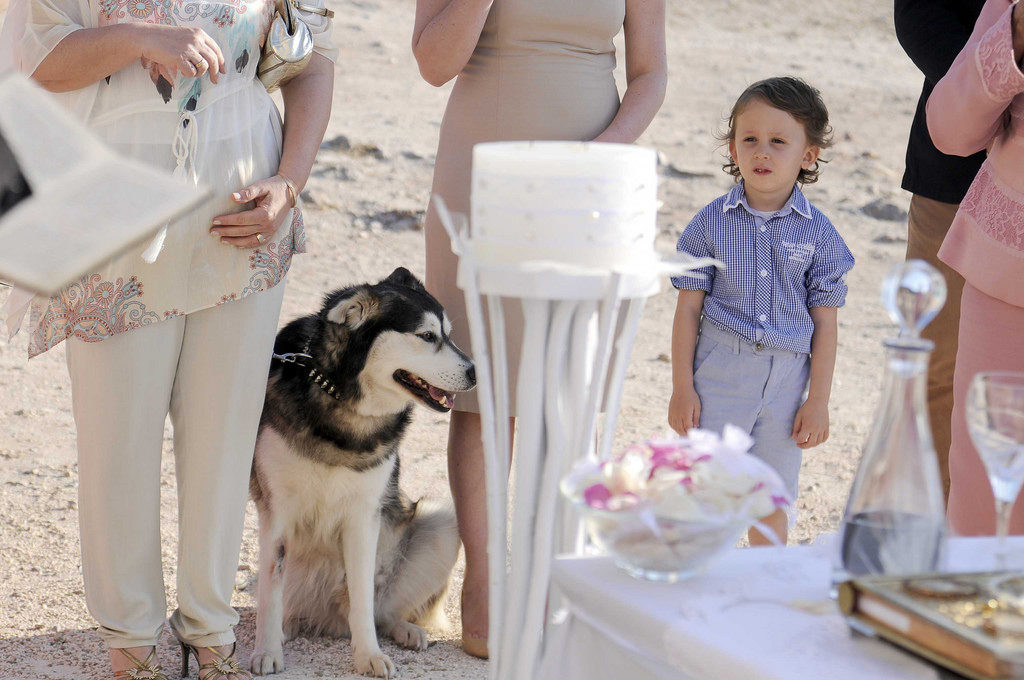
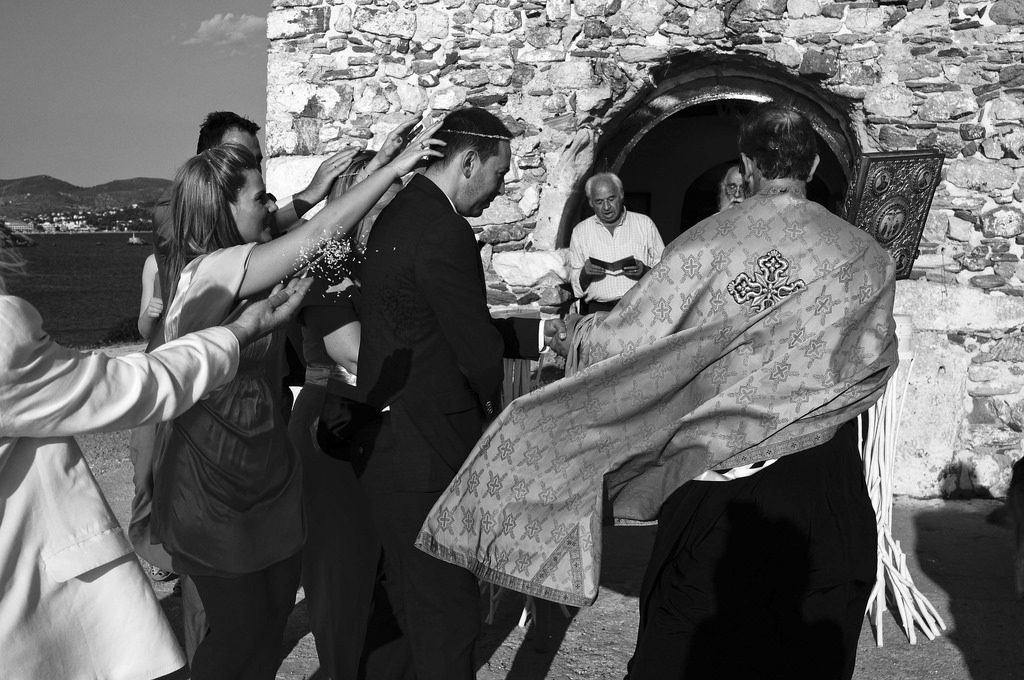
In a photographer less manifestly gripped by the facts of our fragile human being and ways in the world one might call some of her approaches formalist. It is certainly true that rhyme, echo, geometry, continuities and disruptions of line, shape and colour play a highly significant role in the structuring of her images but one of the driving forces of R’s work is that it constantly moves to dissolve any artificial divide between content and form. Yes, her eyes seek pattern; yes, this or that organising device might order an image but this never obscures our awareness of the facts, feelings and relationships portrayed or implicit there. Also—we humans are formalists, aren’t we? We’re pattern seekers. We play. Were you never fascinated as a child by mirrors, by the world turned upside down by hanging from your legs or by the cropping or heightening, or focus) achieved by looking through the cracks in your fingers? Of course you were. As we grow we perceive the whole world through a complex dialectic of what is presented to our senses on the one hand and our burgeoning sorting and structuring principles on the other. We are of necessity creatures of content and form together and one surmises that this is what makes us creatures of art too.
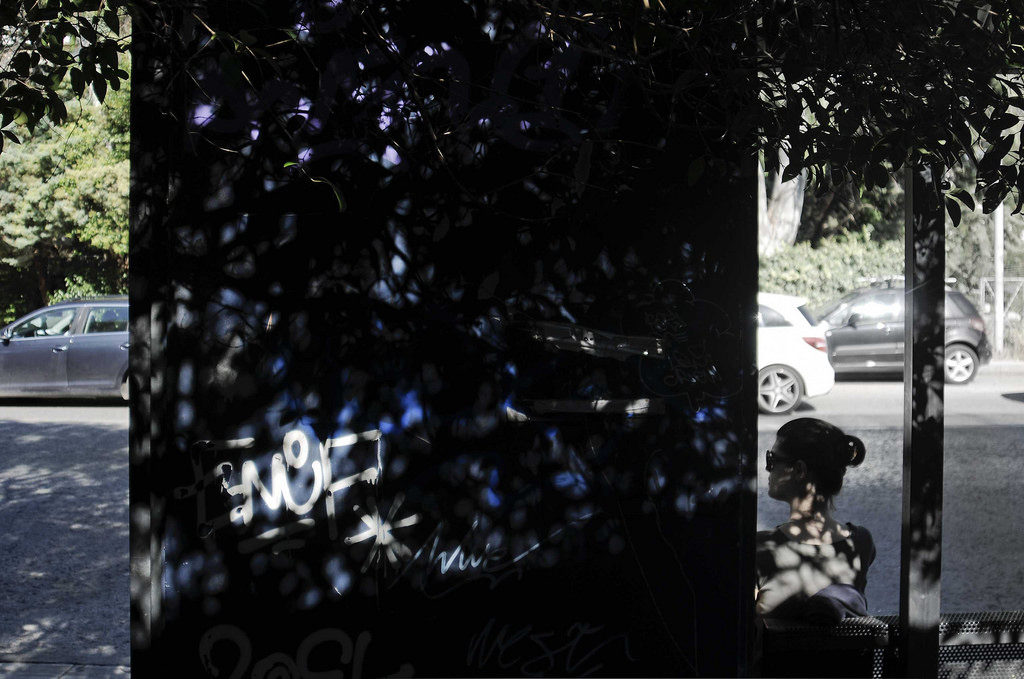
I’d been writing and thinking about this piece for a few months, on and off, and I’d got to a second or third draft when it hit me with a thud, a jolt, that hardly any of the recent images have titles.
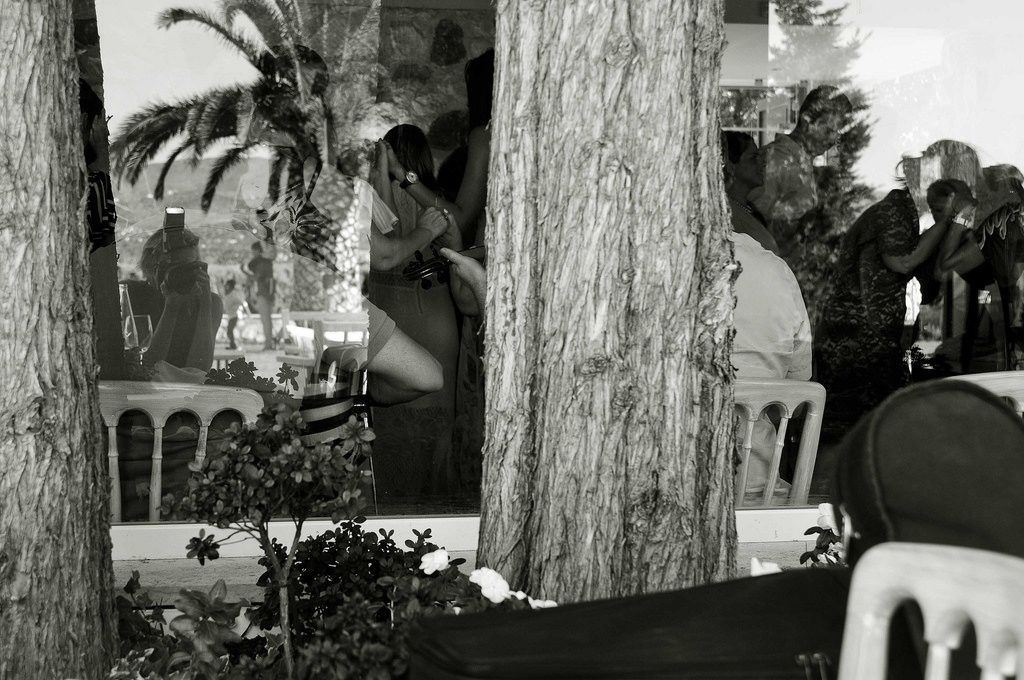
The fact had just sailed under my radar, curiously, since I’ve argued and will again, that insofar as we can talk about meaning in a photo (or any visual artwork) this possibility lies in a network of references and comparisons which ineluctably involves talk, writing or both. Language. Further, that visual art is best seen as something humans do (emphasis on both words) than as the usual set of isolable ‘in and of themselves’ objects (which isolation is a fiction, at best an analytical convenience). And then it struck me ( I was being struck a lot that day) that there is something about these images that fights back against language—they’re often cross genre and resist categorisation and there’s a sense in which the easiest approach to what’s in them is simply to list it, and finally to say that this image had these things in it under this kind of light from that angle but, of course, this is far from satisfactory and at root there is something far transcending taxonomy or description going on. But –dammit! –I can’t help feeling it is as if the images (placed as they are in the sequence formed by Flickr) are calling out, hailing each other. I don’t know why, but forced rhubarb, a most unlikely image, is the one which springs to mind and persists, as if the absence of the immediately adjacent language of a title somehow forces the set of glorious but hitherto mute images to invent speech.
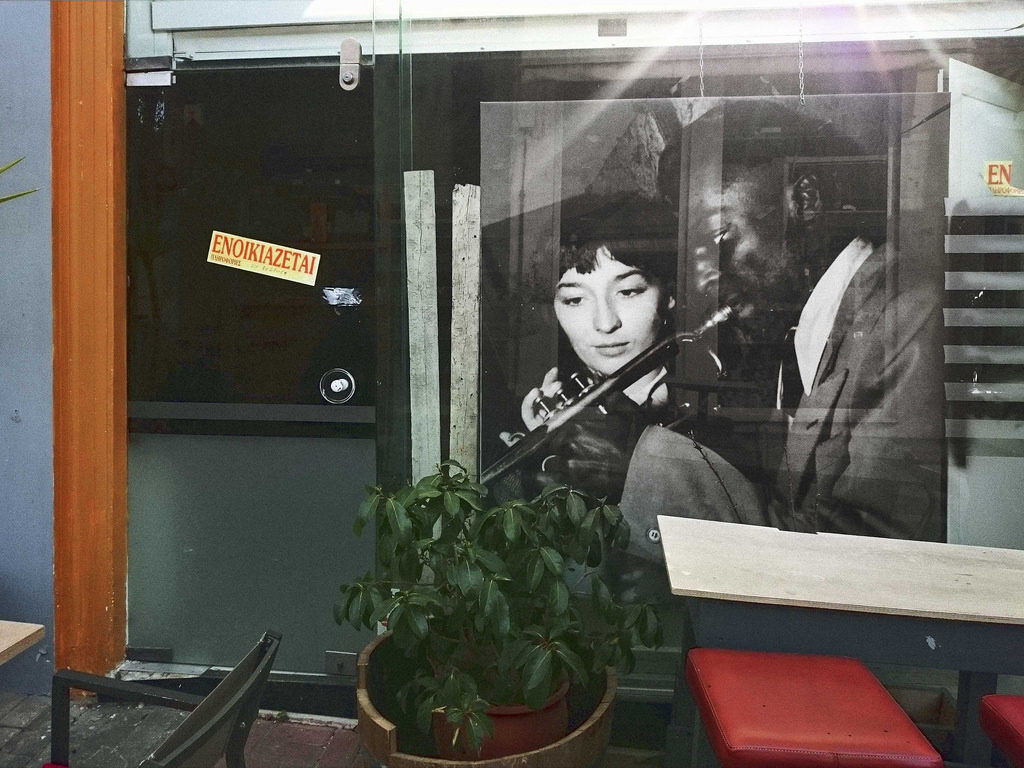
Anyone who has ever taken an un-posed image of a human being on a fast shutter speed will be cautious about ascribing emotions or characteristics to the subject on the basis of what is revealed. As in so many other ways, the very small, the very distant or unreachable, animal locomotion, the photograph reveals things beyond our normal ability to see or grasp them. One of these things is the curious plasticity of the human expression and how in our interactions we read this in sequence, in time, together with a host of other clues, aural and visual, to make sense of what is going on, to try to understand both what a person is doing and to surmise what they might be feeling . (Of course the opposite of this, the posed image, brings its own problems too.)

When we think hard and soberly we cannot but be convinced that the photograph alone, an impossibly small fragment of time, does not allow us enough evidence, that it is somehow unanchored in the world.
And yet, the desire to draw conclusions, to make comment, is certainly strong in us and each photographic image of a person, especially the striking and affecting ones, comes with a very strong sense that we are able to do so.
What can we actually say about the still photographic portrait, both in general and in particular cases?
One thing we might say is that the single image’s apparently complete account of a human being, based upon a fleeting expression (and perhaps the fleeting expressions in response of others and maybe also the presence of contextualising objects or other clues) suggests at best, a class of possibilities. This single image evokes a range of other possible images and moments in the world at least one of which must correspond to our strong intuitions about it. So even if we were able to establish the facts of the matter in this particular case and it made a lie of our emotional response , nevertheless that response represents a truth and somewhere, perhaps quite often, in the world, situations occur, have occurred, will occur, which correspond to this truth.
And it seems to me that it is this instinct for general human truth, allied to the particularity of light, line, composition, of other things depicted, which manifests in the eye-and-heart-catching-ness of the resulting final image.

A strong way of putting it would be that any portrait is just as much a work of fiction as a novel but that as we would not wish to deny something called ‘truth’ in the novel ( you might—I see no point to the thing otherwise) in the portrait we work our way back to truth.
And at least for me it is the photographer’s—and here, now ‘the photographer’s’ means R’s—capacity for empathy, for narrative, for understanding of the world and the wonder and the oddness of its inhabitants that makes her such a good portraitist (and let’s not forget, too, simply having done the thing a lot —this is often underrated nowadays.)
Do I know whether the Orthodox priest at the wedding table was a kind man? No. I don’t. I cannot. Is kindness manifest in the photo, is the possibility of kindness in the world reasonably asserted in it? Do I know more about kindness thereby? Absolutely.
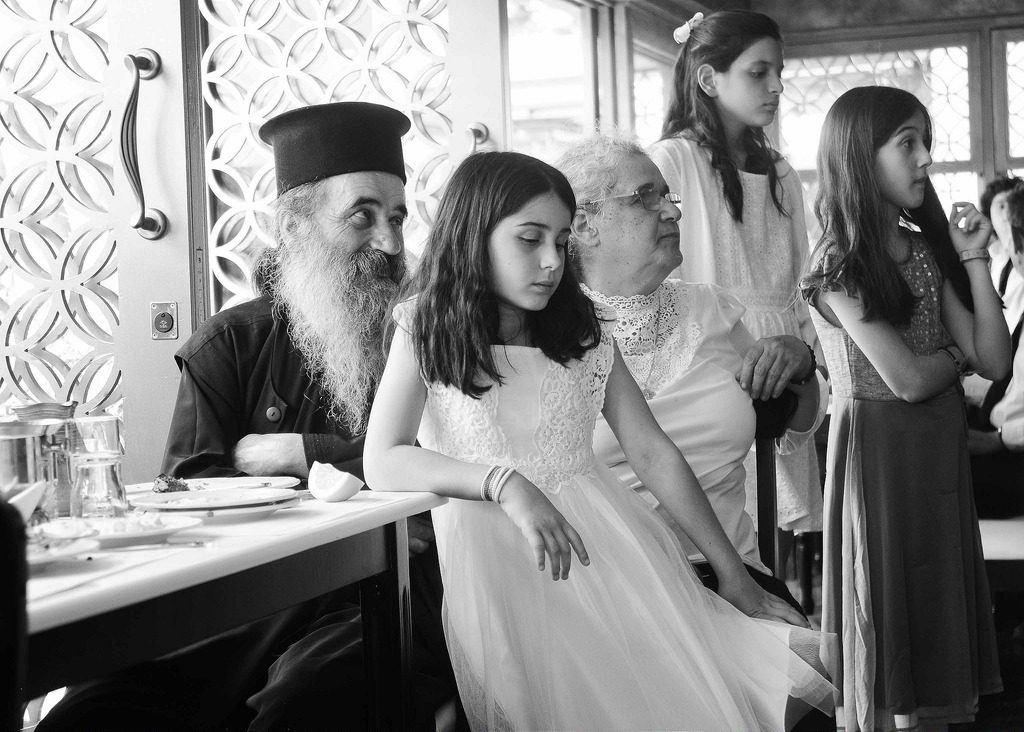
There’s a black and white image, taken, I think, at the place where her teenage sons practice their footballing skills which feels like a short story or perhaps a collection of short stories, each cued by the various human presences which form at one and the same time a large (in how they capture our attention) and a small (in how much actual area of the image they occupy) part of the entire image.
It also has a most clearly defined geometry—three strips, the topmost being the practice field itself, the middle appearing to be a road like depression running between the photographer and this field and the lowest a pavement of some sort on the other side of that ‘road’. The almost bizarrely long evening shadows of R and a companion (and the horizontal distance between shadows is nicely ambiguous on the exact relationship between those shadowed) stretch forward into the image. The vertical grid adjacent to them, with a gap in the centre picked out in shadow too, suggests they are standing at a pedestrian gate to the place. I imagine the figure at the viewer’s right is R as the arms appear to be raised in a photo taking action.
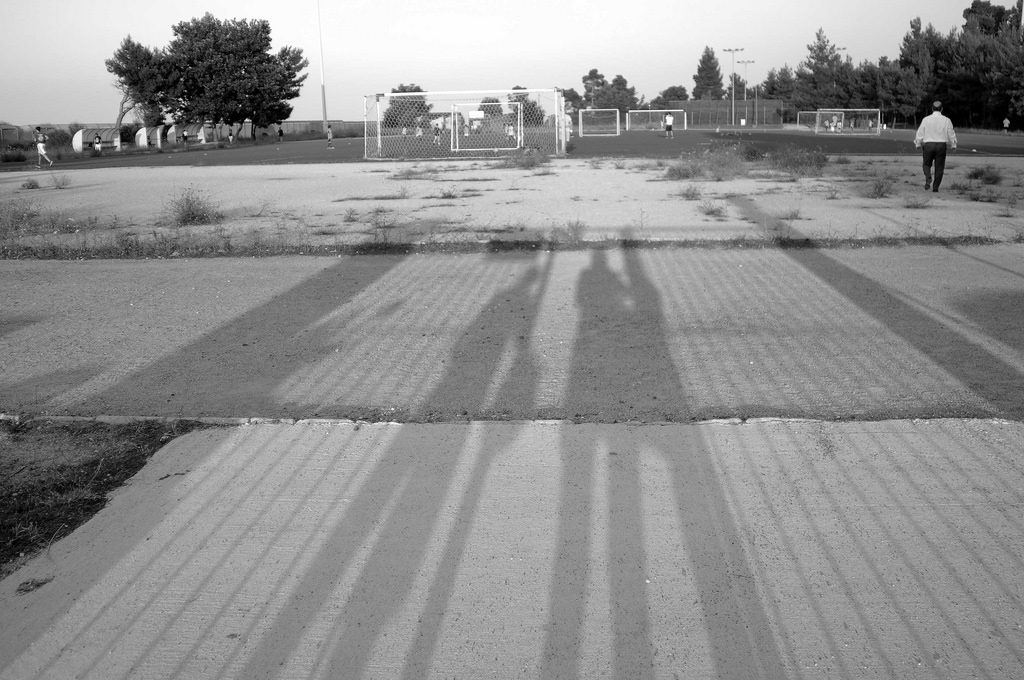
(The image thumbs its nose at genre—it is oblique self-portrait, landscape, social history, portrait and exploration of geometry and structure all at the same time.)
Shadows aside, the figures which catch my eye (what about you, so much to choose from or are you constrained in a similar way to me by something in the way the image is structured?) are the short stocky man in motion, walking away from us at the image’s far right top strip foreground. There’s a delicious swagger and confident openness about him.
Has he passed through the gate where R stands? Did he greet her?
The second key (perhaps because nearest?) figure is the young man, top strip, viewer’s far left, again in movement, this time almost certainly certainly sports related. Is he pursuing a stray ball? Running to greet a friend? Engaged in some sort of running warm up/exercise? As we strain to see, our relationship to the image’s scale shifts and we begin to realise just how many other figures he opens up to us—there are at least six either standing or seated in those little sheds at the field’s side between him and the left edge of the nearest goal net—each an enigma of a small but definite kind—and when we move rightwards from them we realise (and we have to move closer in, look differently, at the image to see this) just how many people there are in some sort of action here. As we move out again we are stuck by the contrast between the contemplative calm of the giant shadows and the anthill busyness of the young men. And here’s another thing. This is such a male photo. (With the exception of the photographer and I think it’s only because I know she is female that I read her as such. Then even as I write this I notice the slight head-cocked-to-one-side quality of aficionado-like attention in the head of the left shadow—and why do I think that might clue maleness? What does that say about me?) Oh! Layers and layers of fact, of presence, of things to enumerate and puzzle over. So much! And this before we take the thing as a totality—geometry, inhabitants, shadows, activity, motivation, time of day, distant trees, weeds and barren ground, a sky whose colour we can only guess from the fact we know there is evening sun. And that totality is the hardest thing to compass in any way other than an intake of breath or shiver down the spine. Enumerating the contents helps (although it’s not essential to the immediate affective apprehension of the whole—that just happens) but it’s the inexplicable (not a value judgement—literally inexplicable—simply, ‘This is what R did’) decision to frame those contents in that way—the bit of the process which defies words—that makes this and so many other pieces by her so powerful.
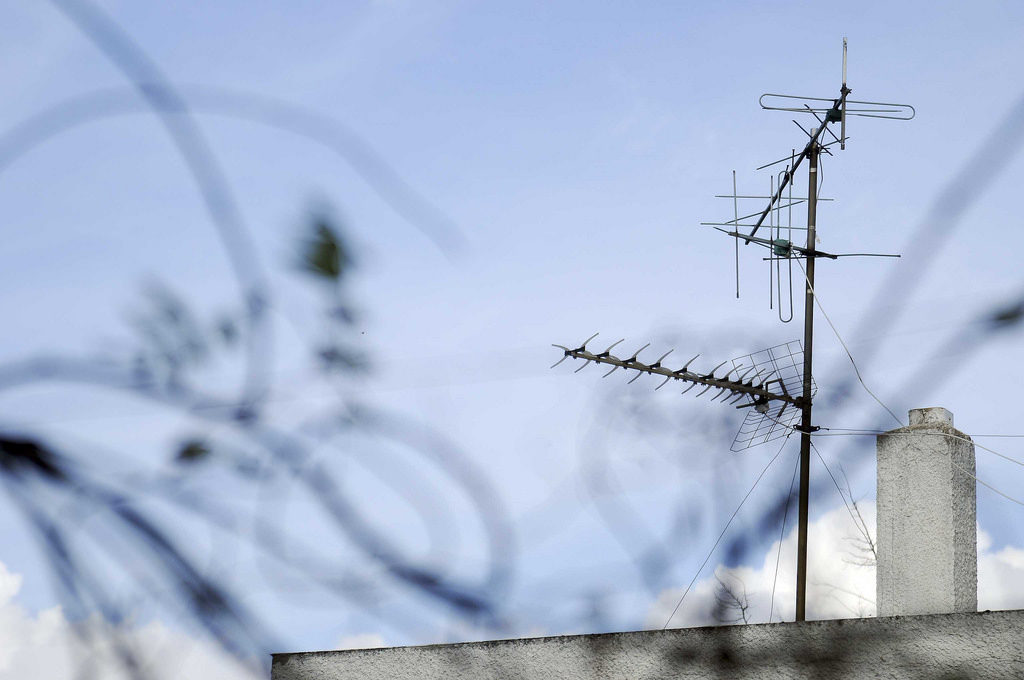
5.
A ravenous eye.
She has a ravenous eye, constantly tracking the scene in front of her and hungry for detail. This hunger does not distinguish between content and form. Whatever is human, whatever stirs affect or curiosity—whether pattern, rhyme or echo, or ethics, or suggested human warmth or frailty, this is swallowed up and processed by heart and mind in turn
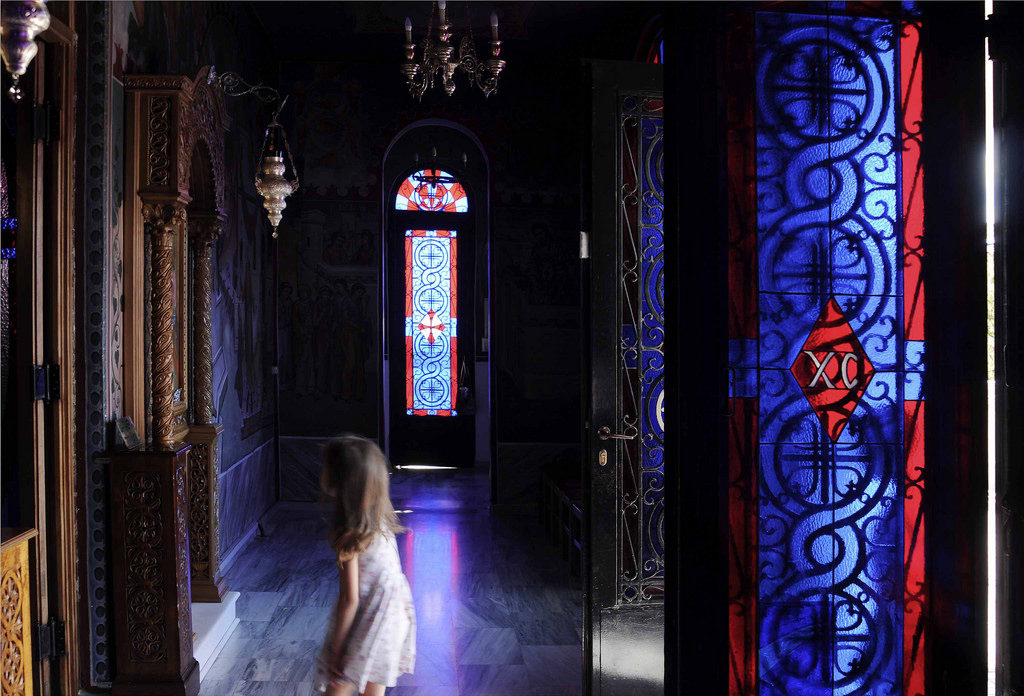
The resulting images bear the strong feel of certain, almost objective, structuring principles—that following of object or creature within a scene, the use of rhyme and echo. Two further categories are geometry and colour (and nothing here is pure, there are no essences, sometimes blocks of colour impose an extra, parallel geometry upon a scene whose first order sense—whether it be human beings in action or traces of interpretable human activity; buildings, signs, the street —apparently lies elsewhere.) The key thing about all these structuring principles is that they are found, excavated, discovered, seen—not made. They happen in parallel with, arise out of the actions and feelings of, human beings in this world, the only one we have.
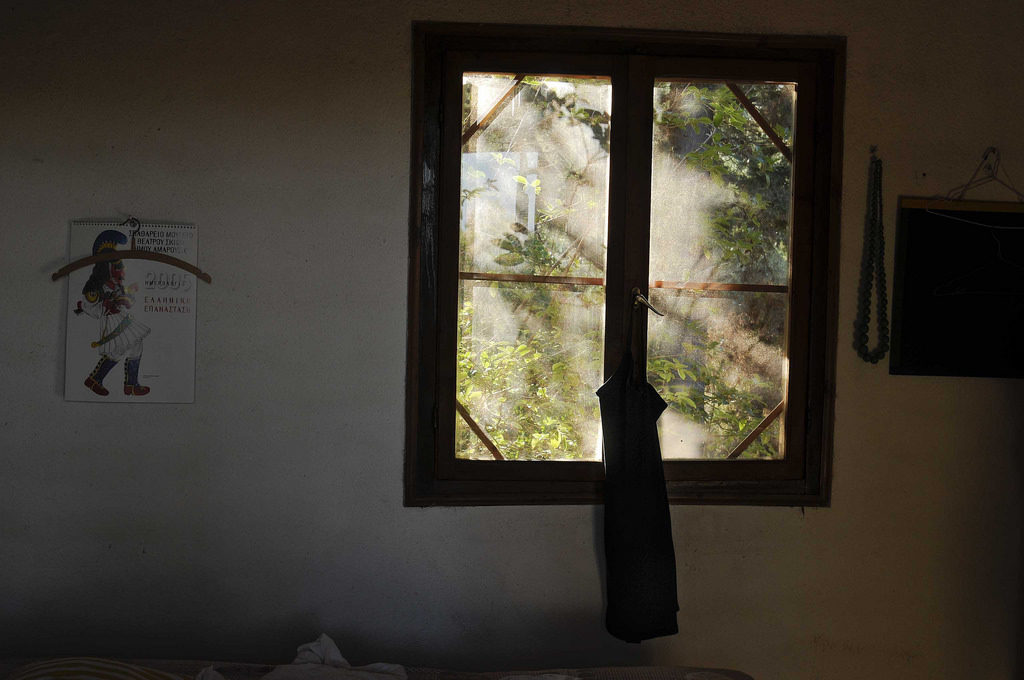
Because she is someone who has lived, fully, in that world, for a fair time, because her hunger extends beyond the visual (she always has a book on the go and the range of these is impressive), because she has a number of languages and is at home in at least three cultures, she makes images which are connected and re-connected by hundreds of threads to things we ourselves might have read and thought or experienced and talked about. Further, it is impossible to imagine that the fact she is a woman living in a country not of her birth, where she has learned a different script, different ways of talking and being, where she works in part as an image maker for hire and constantly both connects and holds separate that work for pay from own ‘own’ work, at the same time as raising children by herself, that these facts are not also somehow foundational.
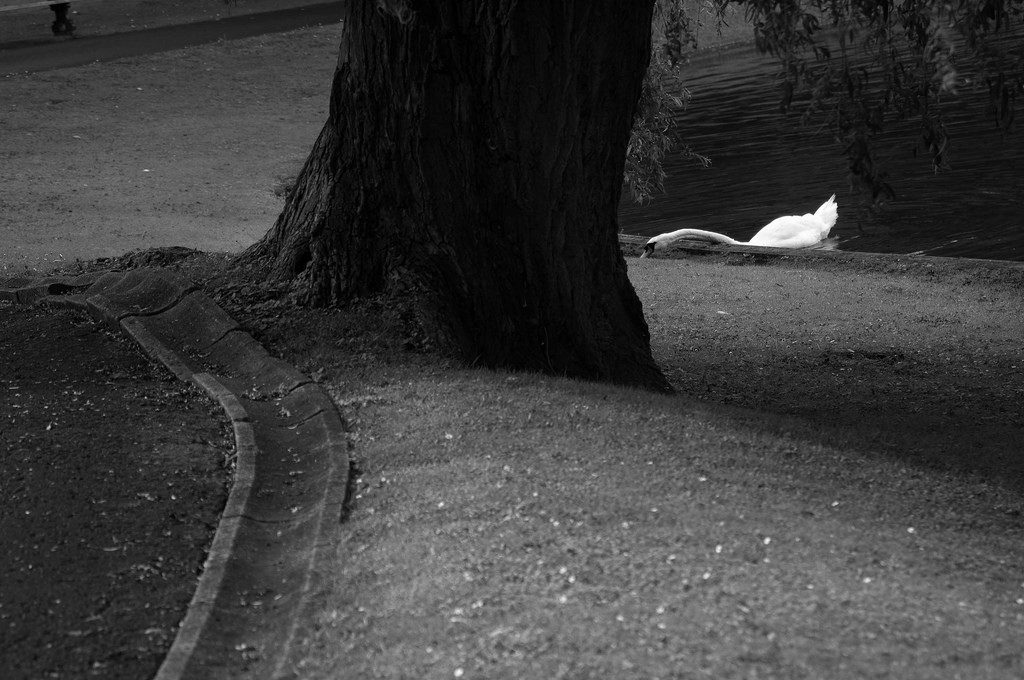
For a long time I have struggled with how to attach the word meaning to image. It is too easily and glibly used. An image never ‘means’ a single thing (unless it is the poorest of images and even then the human capacity for/delight in ambiguity sets to work to disrupt this) What is evident in Rudolph’s work is networks of evoked meaning, memories, feelings.
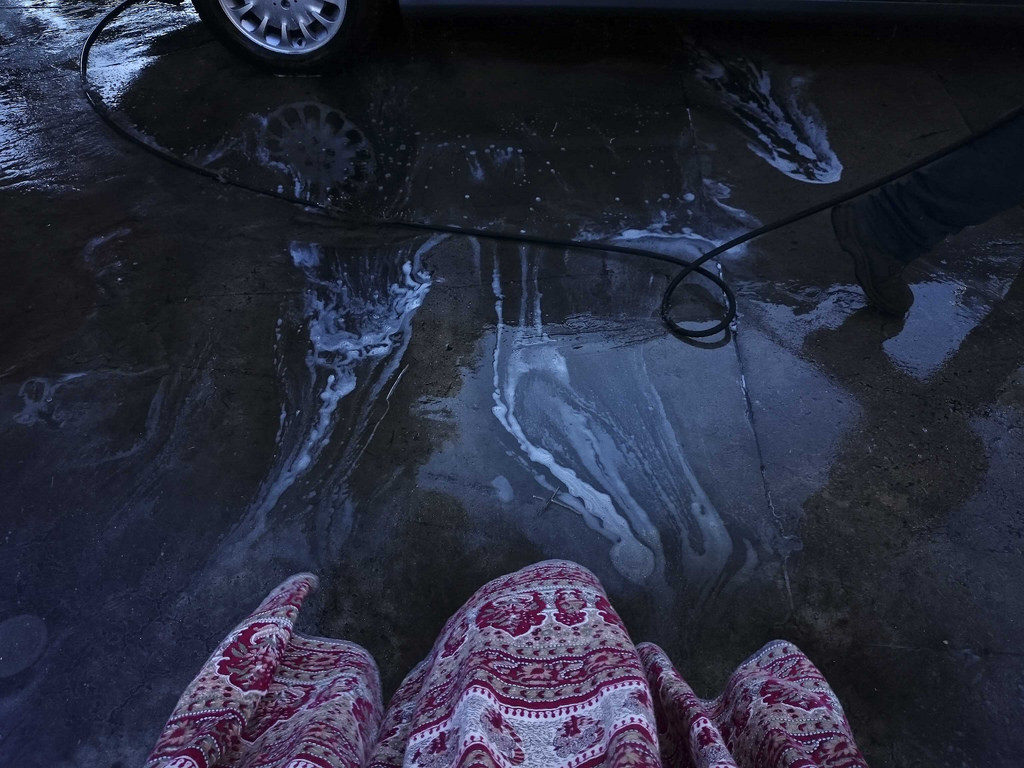
Her way of being in the world, this following her eye and nose, means that there is a kind of metonymy purged of any attempt at system—here is a dog or child or chair or window. Here are the things which necessarily were near it at a moment in time and this is how they were disposed. There was reason and there was randomness. Parts of the disposition were beautiful. (What do I mean by beautiful? They move me, they fill me with a joy that cannot be reduced to words though it perhaps can be limned by various combinations of words, combinations potentially infinite which always nearly but not completely fail.) Parts of the disposition were stark or threatening or at least worrisome. The bringing together of all these parts—worry, beauty, pattern, action—into an image framed, bounded, lit, by the laws of the heart and the laws of the intellect now pulling one way, now the other. The work about the world is itself part of the world. We are not alone. No person is an island. We can read each other’s thoughts. We can feel each other’s feelings.
The words and the image and human heart and human history dance ever outwards and outwards. What does an artist do but always start to write the whole history of humanity in the world?
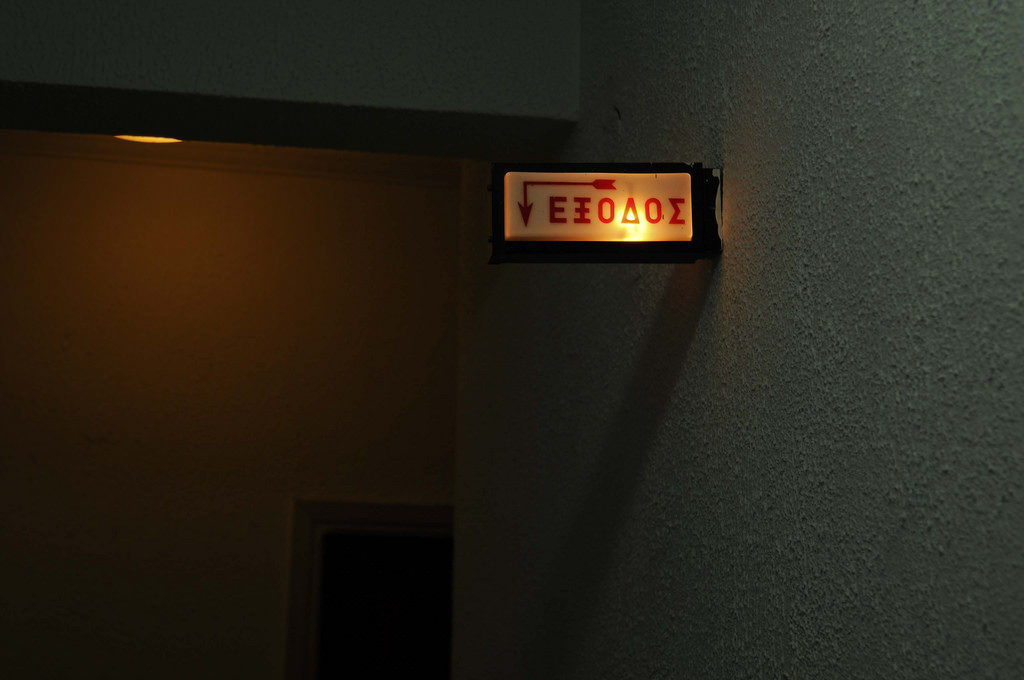
Compiler is an experimental platform organised by curator Alisa Blakeney, artist-curator Tanya Boyarkina, artist Oscar Cass-Darweish and choreographer Eleanor Chownsmith, all currently students of MA Digital Cultures, Goldsmiths. The platform is being built in order to “support collaborative, process-driven projects which connect artists and local communities in networks of knowledge-exchange”.
The organisers of Compiler describe it as a kind of ongoing prototype, a structure constantly negotiating the openness to maintain links to varied practices with the coherence of framing, containing, and describing some of the complicated products of digital-analogue interactions. Their focus is looking at what ‘digital culture’ means and having a productive conversation about it.
From 6-8 April, the first Compiler, Play Safe took place downstairs at OOTB in New Cross. The exhibition examined practices of surveillance inherent in “states, corporations, technological spaces and the idioms of digital art”. It questioned whether an increasing intensity of surveillance is linked to control, extraction and politics, or can be understood as a pleasurable phenomenon. People were invited to “Dance a website, see through the eyes of a computer, and have our cryptobartender mix you a cocktail to cure your NSA woes”. The work on show, made by students from MA Computational Arts and MA Digital Cultures (both Goldsmiths), included Eleanor Chownsmith’s software and performance which turned website HTML into dance routines, Michela Carmazzi’s photographic project documenting the reactions of Julian Assange and his supporters following the United Nations’ ruling about his case, and Saskia Freeke’s machine which repeatedly and intentionally failed to create a ticker-tape parade using sensors and fans.

An exhibition on the theme of surveillance creates a strange grey area for itself when shown in a building with nine screens of CCTV footage. Oscar Cass-Darweish’s project made a fairly direct link to the CCTV cameras which emphasised this greyness. The project produced a rendering of the exhibition space by using a function usually found in motion detection processes. This function calculates the difference in pixel colour values between frames at a set interval and averages them, creating a visual output of how machines calculate difference over time.
Another work which made links with the room upstairs was Fabio Natali’s Cryptobar, where following an interview with the ‘bartender’ about your data privacy needs you were recommended a cocktail of data-encryption software. Upstairs you could buy, and drink, a cocktail with the same name (the Cryptobar was part of the V&A Friday Late on Pocket Privacy on 28 April).
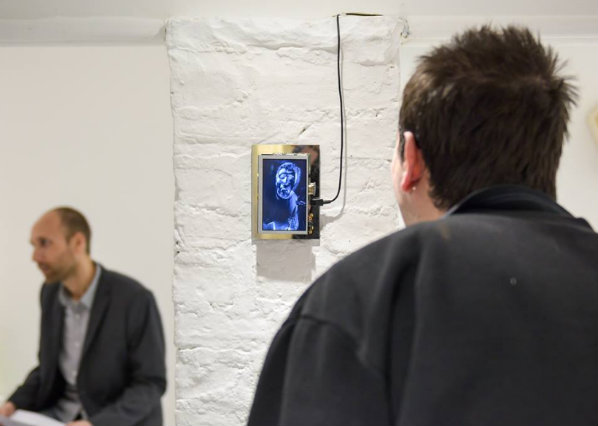
So far, Compiler has made a variety of spaces for conversation about digital culture through both its artworks and its organisation. Each artwork has a different ‘footprint’ of interactions, linking websites to rooms, success to failure, data privacy to financial transaction via consultation, and making interesting connections between CCTV and code, dance notation and HTML, activism and commerce.
An interesting way to read the Compiler platform is as a series of combinations of human-readable codes and machine-readable codes. The platform ‘compiles’ a different combination each time, and each time the output is different. Through this, the interaction of analogue and digital processes is demystified and muddled, in a distinct way. The platform is in its early days, but it seems likely that new connections and new grey areas will appear over the next few months, as Compiler has its second exhibition (again at OOTB) in May, takes part in the CCS conference at Goldsmiths in June and heads in other directions thereafter.
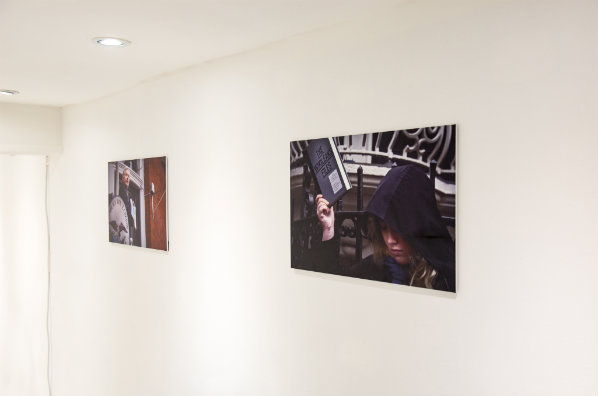
The exhibition offered plenty to play with, while posing complicated problems in relation to openness and experimentation. When I spoke to Eleanor, Tanya and Alisa about Compiler and its aim to engage local communities in networks of knowledge-exchange , we talked about how it’s an impossible and strange aspiration to have a ‘neutral’ venue. While a cocktail can be delicious and engaging, it’s also expensive. While a cafe is, arguably, a less exclusive space than a gallery, OOTB itself is a cafe which targets a specific audience. Drink prices, decor and a host of other factors mean OOTB, like all spaces, is politicised in a particular way. Their venue choices so far will influence, in subtle and overt ways, their future attempts to engage diverse local communities. The organisers of Compiler acknowledge this; their response is that rather than trying to make an artificial neutrality they are keen to move as the platform develops to new spaces and new and different contexts.
A change of context, message, communication style is not easy; nor does it fit with to an easily recognisable politics or aesthetics. Moving into and out of contexts is something to be done carefully and thoughtfully. It seems to me that the Compiler team will have their work cut out, but if they can direct that work in such a way that the platform is able to communicate in multiple ways at once, ‘networks of knowledge-exchange’ could develop between, and in response to, the markers set by the organisers. The question is, how will they develop?
Artist collective THEY ARE HERE invite you to play with and test software that allows wireless-enabled computers and mobile devices to directly form a spontaneous communication network independent of the internet.
Across a series of drop-in sessions facilitated by THEY ARE HERE, games and experiments will be trialled as part of the development process for their forthcoming exhibition at Furtherfield in October 2016.
These activities will take place online & offline around Finsbury Park.
Please bring a wi-fi enabled device to the workshop and if possible download the software Qaul.net in advance (qaul.net/software.html.)
No experience is necessary. Each session will be a discrete event, so you can attend as many or as few as you care to.
Join THEY ARE HERE at any of the following meetings at Furtherfield Commons, Finsbury Gate, Finsbury Park.
Session 1: 3pm Sunday 14th August 2016
Session 2: 3pm Sunday 28th August 2016
Session 3: 3pm Sunday 11th September 2016
Session 4: 3pm Saturday 24th September 2016
You must be aged 16 yrs +
Email contact(at)theyarehere.net for further information.
The Critical Atlas of the Internet, Louise Drulhe’s latest project, is a virtual and physical exploration of the Internet space. The implications of our physical actions in ‘real-time’ are not only timeless in ‘cyberspace’, but also constitute the making of an obscure Internet architecture every time we browse the web. The Atlas itself is an enveloping notebook of Drulhe’s discerning methodology in desiring to represent the geography and architecture of the ‘unseen’ Internet territory. Initially, a graphic designer, Drulhe’s practice has meticulously evolved into including cyber-spatial analysis. She yearns to understand the sociological, political and economical issues that appear online or are exasperated by an online presence – ‘a territory we spend time in without knowing its shape’. The Critical Atlas of the Internet, by being parted between fifteen different hypotheses, sheds light on matters such as the monopolisation of non-physical spaces, the possibility of encumbered networks and the potential forms of the Internet.
I had the pleasure of interviewing Drulhe, where she clarified certain distinctive matters that arise from reading or looking at the virtual form of the Atlas online.
CS: In 2014, Google measured 200TB of data that they claim to be just an estimated 0.004% of the total vastness of the Internet. Initially, the Atlas perceives the Internet through many geometric shapes such as cones and spheres. Is this your approach to establishing that the Internet is an infinite space of shared connections and motion? If this is the case, do you believe it is immeasurable?
LD: I will probably get back to you with a better answer to this question in a few months… I am starting an art residency in Paris at La Paillasse, and I will study the question: “can we measure Internet?”. I am curious to see the best way to represent the Internet: to count the data or to measure the borders. I haven’t started this research yet, but I will look for the best unit of measure to calculate the dimensions of Internet territory: meters? Litres? Percentages? Data traffic? I wonder how to define the “size” of a website. If we look at Google.com, it’s only one webpage, so does this mean that Google is smaller than a regular shopping website that might have thousands of pages?
With the fourth hypothesis of the Atlas, “The Geographic Relief of the Internet”, I tried to represent the «size» of Internet platforms. Their size is actually based on the concentration of the activities they host. The Internet giants try to saturate and incorporate as much territory as possible. Google (now called Alphabet) possesses Chrome, Gmail, Android, Google +, YouTube, Blogger, Google Map / Earth / Street View, Cloud, Nest, and Google X… to cite a few. Internet giants are almost raging an online war to monopolize most Internet territory. I think the next virgin land to conquer is the Internet of Things. The map of this 4th hypothesis is based on a ranking by Alexa’s Top 500 Global Sites. What I would like to do next is to measure this representation.
CS: Extrapolating from your claim that the Internet is a single point at the centre of the globe, what would the repercussions if that space were to be encumbered? Can a network not be encumbered?
LD: It’s true. A reticular space cannot be encumbered, I guess. Facebook.com, for instance, is getting more and more popular, but the site works perfectly; you don’t feel crowded situations on Facebook. If Facebook were a physical public square and 1 billion people met there one day, the situation would be really problematic. On Facebook, you never see the crowd.
In the Atlas, I quote Boris Beaude on this idea “The growth of reticular networks, unlike that of cities, increases their interaction potential without boosting their internal distances. Regardless of the network size, the distance between its respective parts is potentially non-existent. Facebook can host 800 million people without affecting its interaction capacity.”[1] This is what he calls “reticular coalescence”.
[1] Boris Beaude, Internet : “Changer l’espace, changer la société“. 2012.
CS: You build your thesis on the hypothesis that Internet space does not require distance; each component is of equal distance to the other. Otherwise, one click away. Whilst this grants no special status to any person’s ‘search’ to being more important or unimportant, aren’t these ‘search results’ always altered depending on the search engine? For example, untracked browsers such as Tor or extensions on Chrome such as ‘Hola’ have the capability to displace a user from their current location and thus materialise a different order by which results appear to us.
LD: I wrote that the search engines “control Internet architecture” and “distribute the space”. Because almost everyone uses Google, we can assume that Google is the one that controls Internet space so if you use another search engine, like “DuckDuckGo”, you will access the web through a different architecture. But “Tor” and “Hola” are not search engines. “Tor” is a network that enables anonymous communication, and “Hola” is a VPN.
By using a VPN, you can bypass censorship. By changing your localisation, the VPN will give you access to another web. There are as many Internets as there are legislations. This idea is represented in the hypothesis, “A Global Object Projected at the Local Level”. The Internet is global, but we use a national projection of the global network. If you are in China, with a VPN, you can browse the Romanian web and access websites censored by the Chinese government. VPNs also enable anonymity, but that’s another aspect of it.
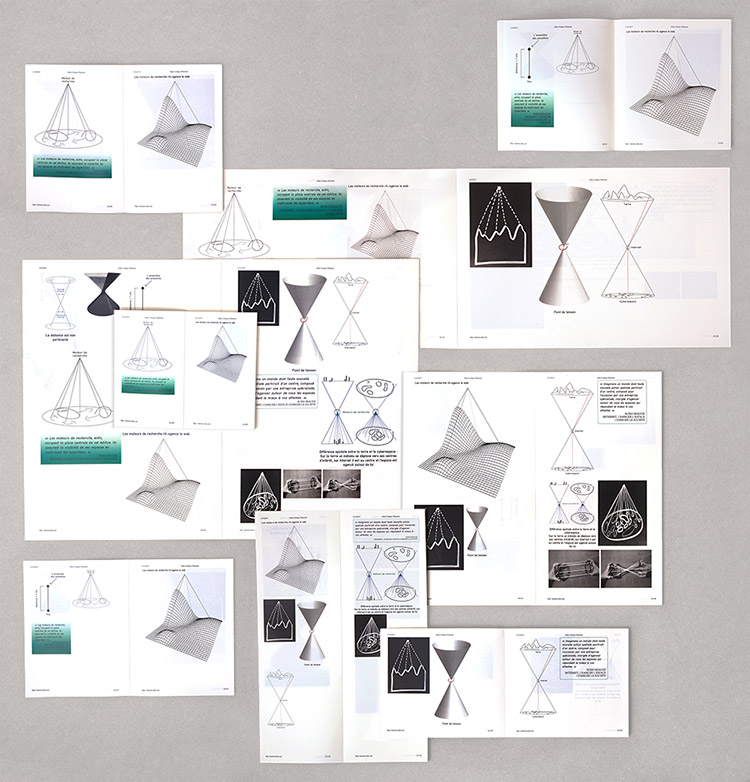
CS: Another one of your hypotheses places us (the users) at the Internet’s centre, constructing the space around us as we move through it. Indeed, the Internet meets our individual needs. Would you, therefore, account for it more as a product – the world’s only flawless consumer good?
LD: Here, I would like to draw your attention to another aspect of my research. If we look at the Internet as a consumer good, it’s probably the first that actually turned consumers into products! In rephrasing one of Mike Edgan’s statements, Jason Fitzpatrick says, “If you are not paying for it, you’re not the customer; you’re the product being sold”. The personal data that are generated through users’ browsing are the new “petrol” of the oncoming economy. And in this particular economy, we won’t be the consumer anymore!
CS: In early forms of the Internet, ‘cyberspaces’ were decentralised. Now, as the Atlas conveys, data is concentrated within the hands of a few ‘heavy players’, illustrated as ‘network nodes’ of various weights burying themselves within the Internet’s surface. Since most of the ‘network nodes’ come from the west, would you consider the Internet to possess a particular Westphalian sovereignty?
LD: The centre of gravity of the Internet is clearly the west, but not, in my opinion, the west as a whole. The US has a dominant position for multiple reasons that I detailed in the Atlas. The Internet’s centre of gravity is defined as “the weight, concentrated solely at one focal point, instead of being distributed over several different points”, a focal point which is undeniably Silicon Valley.
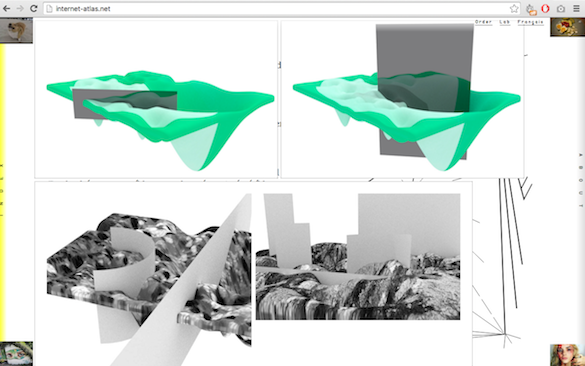
CS: I’d like to ask you about the visual representation of your online Atlas. In particular, about the rigid protrusions of space, you used to convey the ‘splinternet’ and the humorous intrusions of Hilary Clinton and Bernie Sanders, among other seemingly unplanned objects such as fried eggs. Could you comment?
LD: We often imagine the Internet as a single Cloud and a unified territory, but this is wrong. Some multiple limits or frontiers exist online. Some of them are really clear, like the Great Firewall of China: the wall of censorship that divides the Chinese Internet from the rest of the Internet. Another obvious frontier is the limit between the deep web and the surface web. But the frontiers that interested me most were the ones that nobody seemed to pay attention to. The limits are defined by private networks, such as Facebook. People with a Facebook profile never see the frontier because there are always logged in. But when you do not have the password, Facebook is closed, even if some pages are left open to attract you. Their goal is to make you join the private network.
CS: And the unsystematic quirks?
LD: Each time the website loads, the images are automatically taken from the emblematic forum “Reddit”, defined as « the front page of the Internet ». Those images work as timestamps in the Atlas; you can find them at the 4 corners of the website and on the books. The Internet is a perpetually changing space, constantly evolving. It was important for me to bring a timestamp to my Atlas. In addition, these images are symbols of the Internet culture; the Internet meme: viral images spreading through the web and overflowing onto my Atlas.
CS: I’d like to address your citing of Introduction: Rhizome by Guattari and Deleuze. They claim that a rhizome can be connected to anything other and must be’ and therefore does not follow the same arborescent structure of a book or tree. However, as mentioned before, there are arborescent nodes within the Internet itself – the ‘heavy players’. Do you believe this may distract multiplicity or enhance the creation of territories within the Internet? Would you also support that in the case of a rupture, where a rhizome breaks or one of the arborescent nodes fall apart, another node responds to replace as if it was always as such?
LD: Yes, that’s a good comparison. I believe that the heavy players saturate and erode Internet space. This idea is supported by the fact that each company creates a personalized arborescence that is really difficult to connect to by developing its own patterns or ecosystems, like the arborescence of a tree. In this idea, they are breaking with the original shape of the network and its interoperability.
About the rupture, actually, I am not sure. If a node disappears on the network, another node will not necessarily be replaced. If a web page goes offline and at the same time a Facebook page has just been created, the new node (from Facebook) does not take its place. The new node is actually created within the Facebook network. And to refer to my hypothesis about the geographic relief of the Internet, the node opens on the slope of a dominant gap.

CS: As a final point, there’s a particular passage from Baudrillard’s Simulacra and Simulation which I find can be quite relative when considering the structure of the Internet:
“Abstraction today is no longer that of the map, the double, the mirror or the concept. Simulation is no longer that of a territory, a referential being or a substance. It is the generation by models of a real without origin or reality: a hyperreal. The territory no longer precedes the map nor survives it. Henceforth, it is the map that precedes the territory – the precession of simulacra – it is the map that engenders the territory. If we were to revive the fable today, it would be the territory whose shreds are slowly rotting across the map.”
How would you interpret this if we took into consideration Internet territories?
LD: Most people do not consider the Internet as a territory. This idea of cyberspace is a bit old-fashioned. But, I think it is still pertinent today to study the Internet as a real space.
The way we access representations of the Earth today is really magical. Google provides easy access to an extremely precise representation of the Earth through satellite images and maps… But for the territory of the Internet, it’s the opposite. Even if there are a few maps of the Internet, there are no basic tools to map the web. The territory still precedes the map. I would love to see what a Google street view of the Internet looks like!
Venue: The Photographers’ Gallery, London
Links: http://thephotographersgallery.org.uk/furtherfield-in-residence
What do we find when we search our minds and the web for images of money and finance?
Coins and banknotes, trading floors with angry men shouting into phones, skyscrapers and stock charts.
The financial sector remains alienating and opaque to many people. We often struggle to think about how it works and how money moves. Making the invisible world of global finance visible and accessible is an urgent task and there are now many projects that are attempting to do just that.
Join us at The Photographers’ Gallery to build the ‘Activist Bloomberg terminal’ and to contribute to a mood board of future money.
Get involved in a weekend of image play, jargon-busting discussion, hacking and hands-on-exercises, to find out how we might unveil the financial sector. Together we will get involved with activities from open data mapping and visualisation, photography to computer games and digital art installation pieces to explore how money might be accurately represented in an era of digital payment via offshore tax havens.
This is part of Furtherfield’s Art Data Money programme of art shows labs and debates to build a commons for arts in the network age.
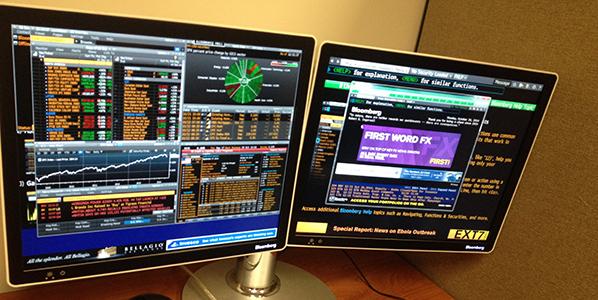
The Bloomberg Terminal is an expensive system that major banks use to get raw data and financial information. The Terminal is out of reach to most ordinary people, but can we create an open-source and open-access alternative Bloomberg to collect, distribute and visualise critical data on high finance? Let’s try!
Saturday 10.30 – 11.30: Brett Scott provides a recap of the first lab*
Open to all, an excellent introduction to the weekend activities.
Saturday 11.30 – 18:00 & Sunday 11:00 – 13:00: Discussions, guided group research, exercises and hands-on activities to familiarise yourself with finance and to build an ‘activist Bloomberg terminal’.
+ Read more about the first lab ‘Building the Activist Bloomberg to demystify High Finance’

What do we find when we search our minds (or the web) for images of money and finance?
And does it matter if we don’t like what we find? We think it does. We assert that money is an emotional, irrational and mysterious medium of networked trust and that the more we can reclaim its images and associations for communal play and circulation the more likely we are to shape it to our interests. That’s why we are building a new mood board for future money.
Saturday 12:00 – 13:00: introduction to the image of money
Talk – Brett Scott (LSFA) introduces the topic with a broad sweep history of money from the primordial swamp to High Frequency Trading
Saturday 13.00 – 17.00: Money mood board workshop
Participants are invited to drop in and take a series of challenges to make, remix and reappropriate photographs – going out onto the streets, searching, interpreting and tagging photographs from some great digital archives and the World Wide Web to create a new image bank for money past, present and future – online and on the walls of The Photographers Gallery
Sunday 11.00 – 13.00: Money mood board workshop continued
Sunday 14.00 – 17.00: Sunday Workshop – Money Masks
Furtherfield take over our regular drop-in workshop for all ages. Visitors are invited to imagine the main players in the future of money and finance: mysterious, glamorous, fierce or ethereal, human or machine. Download, print, collage and assemble masks for a carnival of characters in the future of money.
Reclaim money for the good of us all, and have fun doing it, join us for a weekend.
All events are included with exhibition day pass charge, no booking necessary
Daniel Rourke: At Furtherfield on November 22nd 2014 you launched a Beta version of a networked project, 6PM Your Local Time, in collaboration with Fabio Paris, Abandon Normal Devices and Gummy Industries. #6PMYLT uses twitter hashtags as a nexus for distributed art happenings. Could you tell us more about the impetus behind the project?
Domenico Quaranta: In September 2012, the Link Art Center launched the Link Point in Brescia: a small project space where, for almost two years, we presented installation projects by local and international artists. The Link Point was, since the beginning, a “dual site”: a space where to invite our local audience, but also a set for photographic documentation meant to be distributed online to a global audience. Fabio Paris’ long experience with his commercial gallery – that used the same space for more than 10 years, persuaded us that this was what we had to offer to the artists invited. So, the space was reduced to a small cube, white from floor to ceiling, with neon lights and a big logo (a kind of analogue watermark) on the back door.
Thinking about this project, and the strong presence of the Link Point logo in all the documentation, we realized that the Link Point was actually not bound to that space: as an abstract, highly formalized space, it could actually be everywhere. Take a white cube and place the Link Point logo in it, and that’s the Link Point.
This realization brought us, on the one hand, to close the space in Brescia and to turn the Link Point into a nomad, erratic project, that can resurrect from time to time in other places; and, on the other hand, to conceive 6PM Your Local Time. The idea was simple: if exhibition spaces are all more or less similar; if online documentation has become so important to communicate art events to a wider audience, and if people started perceiving it as not different from primary experience, why not set up an exhibition that takes place in different locations, kept together only by documentation and by the use of the same logo? All the rest came right after, as a natural development from this starting point (and as an adaptation of this idea to reality).
Of course, this is a statement as well as a provocation: watching the documentation of the UK Beta Test you can easily realize that exhibition spaces are NOT more or less the same; that attending or participating in an event is different from watching pictures on a screen; that some artworks work well in pictures but many need to be experiences. We want to stress the value of networking and of giving prominence to your network rather than to your individual identity; but if the project would work as a reminder that reality is still different from media representation, it would be successful anyway.
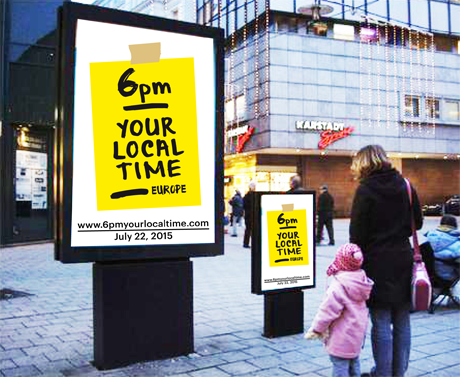
Daniel Rourke: There is something of Hakim Bey’s Temporary Autonomous Zones in your proposal. The idea that geographic, economic and/or political boundaries need no longer define the limits of social collective action. We can criticise Bey’s 1991 text now, because in retrospect the Internet and its constitutive protocols have themselves become a breeding ground for corporate and political concerns, even as technology has allowed ever more distributed methods of connectivity. You foreground network identity over individual identity in the 6PM YLT vision, yet the distinction between the individuals that create a network and the corporate hierarchies that make that networking possible are less clear. I am of course gesturing towards the use of Twitter as the principal platform of the project, a question that Ruth Catlow brought up at the launch. Do you still believe that TAZs are possible in our hyper-connected, hyper-corporate world?
Domenico Quaranta: In its first, raw conceptualization, 6PM YLT had to come with its own smartphone app, that had to be used both to participate in the project and to access the gallery. The decision to aggregate content published on different social platforms came from the realization that people already had the production and distribution tools required to participate in the action, and were already familiar with some gestures: take a photo, apply a filter, add an hashtag, etc. Of course, we could invite participants and audiences to use some specific, open source social network of our choice, but we prefer to tell them: just use the fucking platform of your choice. We want to facilitate and expand participation, not to reduce it; and we are not interested in adding another layer to the project. 6PM YLT is not a TAZ, it’s just a social game that wants to raise some awareness about the importance of documentation, the power of networks, the public availability of what we do with our phones. And it’s a parasitic tool that, as anything else happening online, implies an entire set of corporate frameworks in order to exist: social networks, browsers, operative systems, internet providers, server farms etc.
That said, yes, I think TAZs are still possible. The model of TAZ has been designed for an hyper-connected, hyper-corporate world; they are temporary and nomadic; they exist in interstices for a short time. But I agree that believing in them is mostly an act of faith.
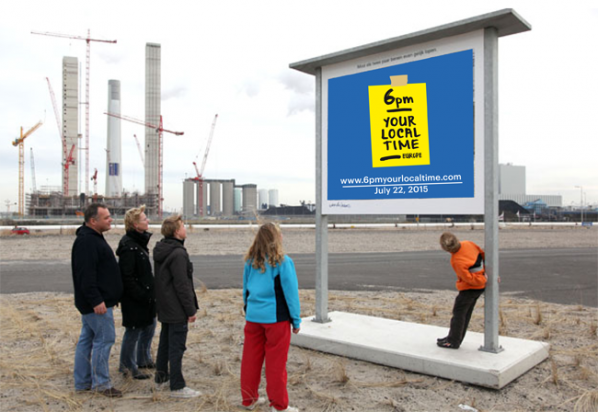
Daniel Rourke: The beta-tested, final iteration of 6pm YLT will be launched in the summer of 2015. How will you be rolling out the project in the forthcoming months? How can people get involved?
Domenico Quaranta: 6PM Your Local Time has been conceived as an opportunity, for the organizing subject, to bring to visibility its network of relationships and to improve it. It’s not an exhibition with a topic, but a social network turned visible. To put it simply: our identity is defined not just by what we do, but also by the people we hang out with. After organizing 6PM Your Local Time Europe, the Link Art Center would like to take a step back and to offer the platform to other organizing subjects, to allow them to show off their network as well.
So, what we are doing now is preparing a long list of institutions, galleries and artists we made love with in the past or we’d like to make love with in the future, and inviting them to participate in the project. We won’t launch an open call, but we already made the event public saying that if anyone is interested to participate, they are allowed to submit a proposal. We won’t accept anybody, but we would be happy to get in touch with people we didn’t know.
After finalizing the list of participants, we will work on all the organizational stuff, basically informing them about the basic rules of the game, gathering information about the events, answering questions, etc.
On the other hand, we have of course to work on the presentation. While every participant presents an event of her choice, the organizer of a 6PM Your Local Time event has to present to its local audience the platform event, as an ongoing installation / performance. We are from Brescia, Italy, and that’s where we will make our presentation. We made an agreement with MusicalZOO, a local festival of art and electronic music, in order to co-produce the presentation and have access to their audience. This is what determined the date of the event in the first place. Since the festival takes place outdoor during the summer, we are working with them on designing a temporary office where we can coordinate the event, stay in touch with the participants, discuss with the audience, and a video installation in which the live stream of pics and videos will be displayed. Since we are expecting participants from Portugal to the Russian Federation, the event will start around 5 PM, and will follow the various opening events up to late night.
One potential reference for this kind of presentation may be those (amazing) telecommunication projects that took place in the Eighties: Robert Adrian’s The World in 24 Hours, organized at Ars Electronica in 1982; the Planetary Network set up in 1986 at the Venice Biennale; and even Nam June Paik’s satellite communication project Good Morning Mr Orwell (1984).
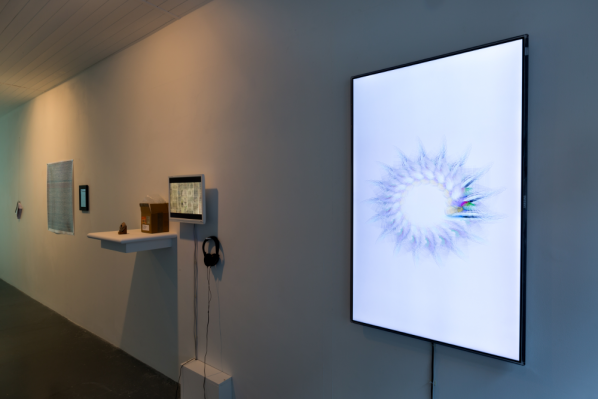
Daniel Rourke: Your exhibition Unoriginal Genius, featuring the work of 17 leading net and new media artists, was the last project to be hosted in the Carroll/Fletcher Project Space (closing November 22nd, 2014). Could you tell us more about the role you consider ‘genius’ plays in framing contemporary art practice?
Domenico Quaranta: The idea of genius still plays an important role in Western culture, and not just in the field of art. Whether we are talking about the Macintosh, Infinite Jest, a space trip or Nymphomaniac, we are always celebrating an individual genius, even if we perfectly know that there is a team and a concerted action behind each of these things. Every art world is grounded in the idea that there are gifted people who, provided specific conditions, can produce special things that are potentially relevant for anybody. This is not a problem in itself – what’s problematic are some corollaries to our traditional idea of genius – namely “originality” and “intellectual property”. The first claims that a good work of creation is new and doesn’t depend on previous work by others; the second claims that an original work belongs to the author.
In my opinion, creation never worked this way, and I’m totally unoriginal in saying this: hundreds of people, before and along to me, say that creating consists in taking chunks of available material and assembling them in ways that, in the best situation, allow us to take a small step forward from what came before. But in the meantime, entire legal systems have been built upon such bad beliefs; and what’s happening now is that, while on the one hand the digitalization of the means of production and dissemination allow us to look at this process with unprecedented clarity; on the other hand these regulations have evolved in such a way that they may eventually slow down or stop the regular evolution of culture, which is based on the exchange of ideas.
We – and creators in particular – have to fight against this situation. But Unoriginal Genius shouldn’t be read in such an activist way. It is just a small attempt to show how the process of creation works today, in the shared environment of a networked computer, and to bring this in front of a gallery audience.
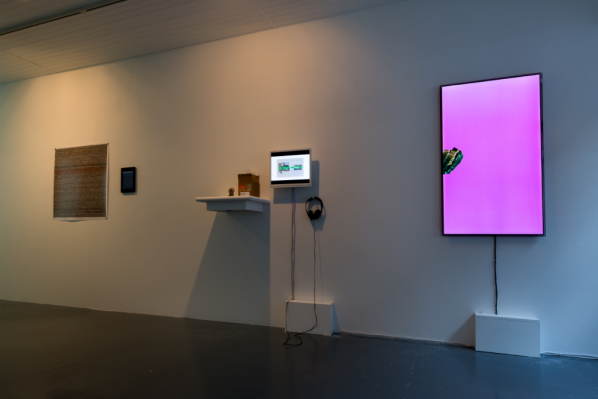
Daniel Rourke: So much online material ‘created’ today is free-flowing and impossible to trace back to an original author, yet the tendency to attribute images, ideas or ‘works’ to an individual still persists – as it does in Unoriginal Genius. I wonder whether you consider some of the works in the show as more liberated from authorial constraints than others? That is, what are the works that appear to make themselves; floating and mutating regardless of particular human (artist) intentions?
Domenico Quaranta: Probably Museum of the Internet is the one that fits best to your description. Everybody can contribute anonymously to it by just dropping images on the webpage; the authors’ names are not available on the website, and there’s no link to their homepage. It’s so simple, so necessary and so pure that one may think that it always existed out there in some way or another. And in a way it did, because the history of the internet is full of projects that invite people to do more or less the same.
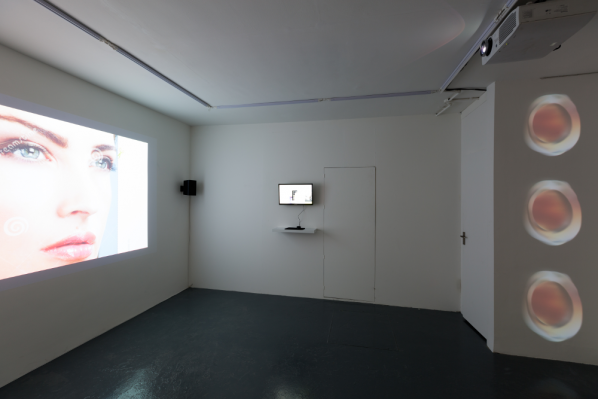
Daniel Rourke: 2014 was an exciting year for the recognition of digital art cultures, with the appointment of Dragan Espenschied as lead Digital Conservator at Rhizome, the second Paddles On! auction of digital works in London, with names like Hito Steyerl and Ryan Trecartin moving up ArtReview’s power list, and projects like Kenneth Goldsmith’s ‘Printing out the Internet’ highlighting the increasing ubiquity – and therefore arguable fragility – of web-based cultural aggregation. I wondered what you were looking forward to in 2015 – apart from 6PM YLT of course. Where would you like to see the digital/net/new media arts 12 months from now?
Domenico Quaranta: On the moon, of course!
Out of joke: I agree that 2014 has been a good year for the media arts community, as part of a general positive trend along the last few years. Other highlighs may include, in various order: the September 2013 issue of Artforum, on “Art and Media”, and the discussion sparked by Claire Bishop’s essay; Cory Arcangel discovering and restoring lost Andy Warhol’s digital files from floppy disks; Ben Fino-Radin becoming digital conservator at MoMA, New York; JODI winning the Prix Net Art; the Barbican doing a show on the Digital Revolution with Google. Memes like post internet, post digital and the New Aesthetic had negative side effects, but they helped establishing digital culture in the mainstream contemporary art discourse, and bringing to prominence some artists formerly known as net artists. In 2015, the New Museum Triennial will be curated by Lauren Cornell and Ryan Trecartin, and DIS has been announced to be curator of the 9th Berlin Biennial in 2016.
All this looks promising, but one thing that I learned from the past is to be careful with optimistic judgements. The XXI century started with a show called 010101. Art in Technological Times, organized by SFMoMA. The same year, net art entered the Venice Biennale, the Whitney organized Bitstreams and Data Dynamics, the Tate Art and Money Online. Later on, the internet was announced dead, and it took years for the media art community to get some prominence in the art discourse again. The situation now is very different, a lot has been done at all levels (art market, institutions, criticism), and the interest in digital culture and technologies is not (only) the result of the hype and of big money flushed by corporations unto museums. But still, where we really are? The first Paddles On! Auction belongs to history because it helped selling the first website ever on auction; the second one mainly sold digital and analogue paintings. Digital Revolution was welcomed by sentences like: “No one could fault the advances in technology on display, but the art that has emerged out of that technology? Well, on this showing, too much of it seems gimmicky, weak and overly concerned with spectacle rather than meaning, or making a comment on our culture.” (The Telegraph) The upcoming New Museum Triennial will include artists like Ed Atkins, Aleksandra Domanovic, Oliver Laric, K-HOLE, Steve Roggenbuck, but Lauren and Ryan did their best to avoid partisanship. There’s no criticism in this statement, actually I would have done exactly the same, and I’m sure it will be an amazing show that I can’t wait to see. Just, we don’t have to expect too much from this show in terms of “digital art recognition”. So, to put it short: I’m sure digital art and culture is slowly changing the arts, and that this revolution will be dramatic; but it won’t take place in 2015 🙂
An International Online Symposium on Innovation in Networked Research, Artistic Production and Teaching in the Arts
Opening Reception: Tuesday, March 31, 11:00 AM – 1:00 PM BST (British Summer Time)
For online access login to Adobe Connect as a Guest: http://ntu.adobeconnect.com/symposium2015
11:00 AM – 11:30 AM (BST)
Welcoming Remarks from Singapore: Symposium co-chairs, Randall Packer & Vibeke Sorensen
Welcoming Remarks from London: Furtherfield co-founders & co-directors, Ruth Catlow & Marc Garrett
11:30 AM – 12:30 PM (BST)
@ Home With Furtherfield: Join Furtherfield co-directors Ruth Catlow & Marc Garrett for an intimate telematic gathering of Internet artist interviews & conversation with: Nick Briz, Joseph Chiocchi, Helen Varley Jamieson, Maxime Marion, Juergen Trautwein, Joana Moll.
12:30 PM – 1:00 PM (BST)
Live Webcam Cyberformance: we r now[here] is a cyberformance about nowhere and somewhere: the “nowhere” of the Internet becomes “now” and “here” through our virtual presence. Created by Helen Varley Jamieson and performed by NTU students.
For more information visit the Art of the Networked Practice | Online Symposium website.
Contact: gabrielle@andfestival.org.uk
Hashtag: #6pmuk
Participants: TBC
VISITING INFORMATION
DOWNLOAD PRESS RELEASE
6PM YLT is a networked, distributed, one night contemporary art event, which takes place simultaneously in different locations, coordinated from one central venue, and documented online via a web application.
Furtherfield is hosting the first UK event, chosen for its history of critical engagement with networked culture.
At 5.30 pm, Domenico Quaranta and Fabio Paris from Link Art Center will talk through their ambitions and inspiration for the project. For the duration of the event, participating venues and their audiences across the UK will be testing the platform by sharing documentation images and videos of their events under the same hashtag, #6pmuk. The audience at Furtherfield will be able to enjoy the live feed from all the locations involved, and to discuss the project with us.
Artists, technologists, network thinkers and makers are invited to join us to learn more about the conceptual framework for 6PM YLT and talk through how it can evolve, in anticipation of its European launch in July. Food and drinks will be available!
6PMYLT is a format conceived by the Link Art Center and developed in collaboration with Abandon Normal Devices (AND) and Gummy Industries. On 22 July 6 PM YOUR LOCAL TIME launches across Europe.
6 PM YOUR LOCAL TIME (6PM YLT) is a networked, distributed, one night contemporary art event taking place simultaneously in different locations, coordinated from one central venue and documented online via a web application. The locations (institutions, non-profit spaces, commercial galleries, artist’s studios) will address their local audience and, through the dedicated web platform, a global audience. While visiting your local 6PM YLT event(s) will allow you to experience a single portion first hand, the only way to get the whole picture will be to access its online documentation: all exhibits will be documented and shared in real time by organizers and audience on the dedicated web platform, thanks to a web application aggregating content from different social platforms.
The lead partner will coordinate the event from one central venue, and will put on display the event itself, screening the live feed from all the locations involved, and eventually making additional documentation available in different ways, ie. arranging video conferences with specific venues, or printing out images in real time and displaying them as a wall installation.
After the launch event, 6PMYLT will become an open format available for anyone to utilise. The lead partners will maintain the platform and support the coordination of events all around the world.
Today, art is mostly experienced through its documentation. Even if globalization made it easier and cheaper to organize exhibitions, ship artworks, invite artists and move audiences to any part of the world, the excess of cultural activity all around the world makes it impossible to be everywhere at the same time. Bits are still faster and cheaper than atoms, and we can enjoy them more comfortably on different devices. The border between first hand and second hand experience, reality and media documentation becomes increasingly blurred, with a profound impact on the way art is produced and documented.
Almost every art-addict is now using social networks like Instagram, Twitter and Facebook to take photographs during art exhibitions and to share them with their contacts. The pictures already have some meta-data that we could use to trace them and to collect them: #hashtags, captions, geographical data, publishing date. By suggesting the use of a given #hashtag to all the organizers and audience participants, we can collect and show all this documentation on a dedicated web platform. Our software will automatically collect all the pictures, tweets, and public Facebook produced about the 6PM YLT event, and will show them in a single gallery.
6PMYLT is a format conceived by the Link Art Center and developed in collaboration with Abandon Normal Devices (AND) and Gummy Industries.
The Link Center for the Arts of the Information Age (Link Art Center) is a no-profit organization promoting artistic research with new technologies and critical reflections on the core issues of the information age: it organizes exhibitions, events, conferences and workshops, publishes books, forges partnerships with private and institutional partners and networks with similar organizations worldwide. More info: www.linkartcenter.eu
Abandon Normal Devices (AND) presents world-class artists at the frontiers of art, digital culture and new cinema. A UK based organisation it is a catalyst for new approaches to art-making and digital invention, commissioning public realm works, exhibitions, research projects and a roaming biennial festival. AND has commissioned work from Carolee Schneeman, Krystoph Wodischko, Gillian Wearing, Phil Collins, Rafael Lozano Hemmer and the Yes Men (to name but a few). More info: www.andfestival.org.uk/
Gummy Industries is an online communication and marketing agency based in Brescia, Italy. Their work ranges from consultancy to design and (web) development. They usually work with medium business and large companies, with a strong focus on the fashion industry. More info: http://gummyindustries.com/
Furtherfield was founded by artists Ruth Catlow and Marc Garrett in 1997 and is been sustained by the work of its community; specialist and amateur artists, activists, thinkers, and technologists, who, together cultivate open, critical contexts for making and thinking. Furtherfield is now a dynamic, creative and social nerve centre where upwards of 26,000 contributors worldwide have built a visionary culture around co-creation – swapping and sharing code, music, images, video and ideas. More info: www.furtherfield.org.
Concept: Fabio Paris
Production: Link Art Center, Brescia, IT
Co-production: Abandon Normal Devices, Manchester, UK
Website and software development: Gummy Industries, Brescia, IT
Funded by: Creative Europe; Art Council England
6PM YOUR LOCAL TIME is realized in the framework of Masters & Servers, a joint project by Aksioma (SI), Drugo more (HR), Abandon Normal Devices (UK), Link Art Center (IT) and d-i-n-a / The Influencers (ES) that was recently awarded with a Creative Europe 2014 – 2020 grant. For 24 months from now, Masters & Servers will explore networked culture in the post-digital age.
Furtherfield presents DIGITAL ZOO: Life from the world wild web, a touring exhibition that invites audiences to explore and marvel at new patterns of human and digital behaviours in the network age.
Featuring Andy Deck, Mary Flanagan, Genetic Moo, Liz Sterry, Thomson & Craighead, Pete Gomes, and a new interactive mobile artwork commission by Transnational Temps.
DIGITAL ZOO features experimental software, interactive videos, installations, workshops, networked and mobile media created by internationally recognised artists inspired to explore the ways in which our lives are being shaped by digital technologies, and challenge the concept that digital art is only accessible in galleries or online.
Since 2008 artist group Genetic Moo have been developing a series of interactive video installations using choreographed video clips that respond in a variety of life-like ways to user motion and touch. With Animacules they take inspiration from the 19th century sea life illustrations of Ernst Haeckel and the work of the 17th century Dutch scientist Antonie van Leeuwenhoek to create a dark sea of wiggling, luminescent creatures that gorge on torch light.
Internationally renowned artist duo Thomson & Craighead create a new site-specific installation especially for the DIGITAL ZOO tour. A wall of propaganda style posters of the Tweets and other status updates drawn from people in the local area of the tour venues, offers a poetic snapshot of the invisible conversations taking place, “the idle mutterings of ourselves to ourselves as a form of concrete poetry.” The work is based on the artists’ London Wall series shown at the Museum of London (2010), Furtherfield Gallery (2012) and Carroll/Fletcher (2013).
Liz Sterry is an artist fascinated with the way people use the Internet to express themselves. In Kay’s Blog she presents an exact physical replica of a young woman’s bedroom, recreated through information, images and notes about her daily life that the real Kay posted on her public blog. With social media often used as a platform for self-expression and performance, the work questions how much of ourselves we share online with strangers without even realising it.
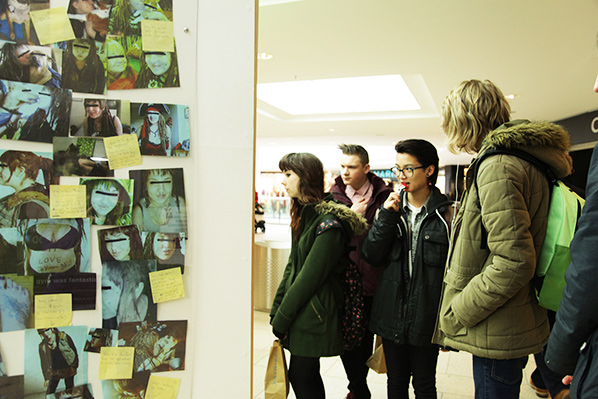
With his novel use of Twitter, US artist Andy Deck savours the wildness of everyday language with people around the world, inspired by the wealth of nature-related sayings passed down over centuries. He invites audiences to help him build a bestiary of animal idioms using social media and an interactive installation.
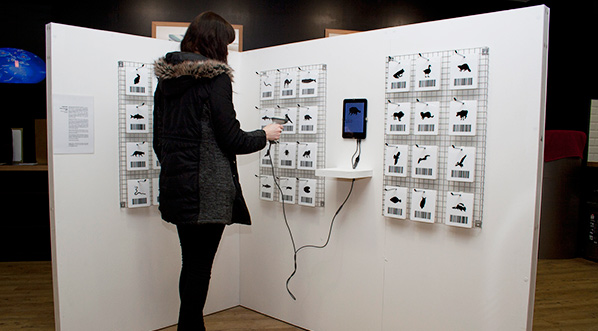
Experimental filmmaker Pete Gomes invited residents in Sunderland with no acting experience to participate in a 45 minute long acting session. Each participant was directed to perform on camera for a single five-minute take. Screened as a series, Cycle of Purposes questions reality and artifice by exploring how thoughts and feelings are acted, amplified, exaggerated and stylised every day in response to different people and places.
Mary Flanagan travels overland and undersea, in virtual worlds built and inhabited by other virtual beings. [borders] is a video documentation of her walks in beautiful and hypnotic landscapes that expose the boundaries of the virtual world by testing its edges. Her walks are inspired by Thoreau, the great American nature writer and walker, who, avoiding highways, chose instead to wander in order to understand the spiritual possibilities of the landscape.
Mall of the Wild by Transnational Temps is a new commission created especially for Digital Zoo. Players help the famous artist Magritte to find fake wildlife in the shopping centre. Equipped with a store map and a smart phone app, they have limited time to find a number of representations of wild animals visible in the products of the shopping centre. They map rare species and share their wildlife documentary photos in the online “Ceci n’est pas…” collection via social networks.
In creating DIGITAL ZOO, Furtherfield believe that digital networks and social media offer the potential for a more open relationship between artists and audiences, changing the life of an artwork in the world, and the ways in which people encounter it, and sometimes collaborate in its creation.
Personal information is exchanged with increasing frequency, and daily lives are becoming ever more public, as if in a public zoo. People are both animals and visitors; hunters, trackers, observers, naturalists and zookeepers; and educators and pundits. The longer-term social effects of this collective public performance are awaited…
The exhibition was accompanied by a series of creative workshops inspired by Crow_Sourcing for children aged 6-11 years old.
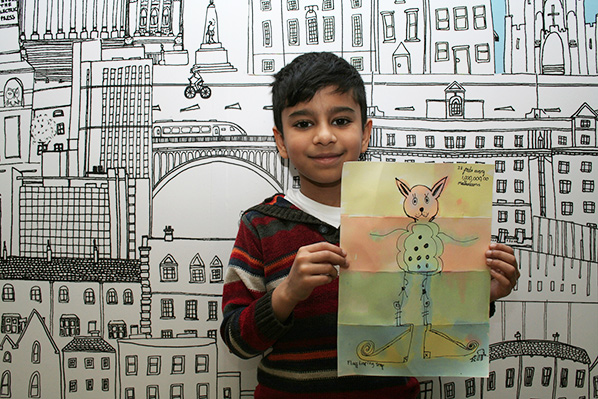
Curated and produced by Furtherfield in collaboration with Culture Code and Land Securities.
Digital Zoo is supported by Arts Council England through the Strategic Touring programme.
Crow_Sourcing by Andy Deck was made possible with funding from the Jerome Foundation, and was a 2012 Commission of New Radio and Performing Arts, Inc. for its Turbulence website.
Featured image: Thomson and Craighead, Here (2013)
Visiting Jon Thomson and Alison Craighead’s survey exhibition, Never Odd Or Even, currently on show at Carroll / Fletcher Gallery, I found myself confronted with an enigma. How to assemble a single vision of a body of work, impelled only by the dislocated narratives it offers me? ‘Archaeology’ is derived from the Greek word, arche, meaning ‘beginning’ or ‘origin’. The principle that makes a thing possible, but which in itself may remain elusive, unquantifiable, or utterly impervious to analysis. And so it is we search art for an origin, for an arising revelation, knowing full well that meaning is not something we can pin down. Believing, that the arche of a great work is always just about to take place.
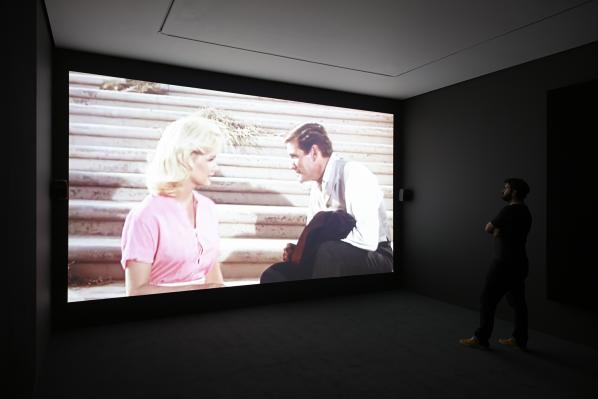
In an essay written especially for the exhibition, David Auerbach foregrounds Thomson and Craighead’s work in the overlap between “the quotidian and the global” characteristic of our hyperconnected contemporary culture. Hinged on “the tantalising impossibility of seeing the entire world at once clearly and distinctly” [1] Never Odd Or Even is an exhibition whose origins are explicitly here and everywhere, both now and anywhen. The Time Machine in Alphabetical Order (2010), a video work projected at the heart of the show, offers a compelling example of this. Transposing the 1960 film (directed by George Pal) into the alphabetical order of each word spoken, narrative time is circumvented, allowing the viewer to revel instead in the logic of the database. The dramatic arcs of individual scenes are replaced by alphabetic frames. Short staccato repetitions of the word ‘a’ or ‘you’ drive the film onwards, and with each new word comes a chance for the database to rewind. Words with greater significance such as ‘laws’, ‘life’, ‘man’ or ‘Morlocks’ cause new clusters of meaning to blossom. Scenes taut with tension and activity under a ‘normal’ viewing feel quiet, slow and tedious next to the repetitive progressions of single words propelled through alphabetic time. In the alphabetic version of the film it is scenes with a heavier focus on dialogue that stand out as pure activity, recurring again and again as the 96 minute 55 second long algorithm has its way with the audience. Regular sites of meaning become backdrop structures, thrusting forward a logic inherent in language which has no apparent bearing on narrative content. The work is reminiscent of Christian Marclay’s The Clock, also produced in 2010. A 24 hour long collage of scenes from cinema in which ‘real time’ is represented or alluded to simultaneously on screen. But whereas The Clock’s emphasis on cinema as a formal history grounds the work in narrative sequence, Thomson and Craighead’s work insists that the ground is infinitely malleable and should be called into question.
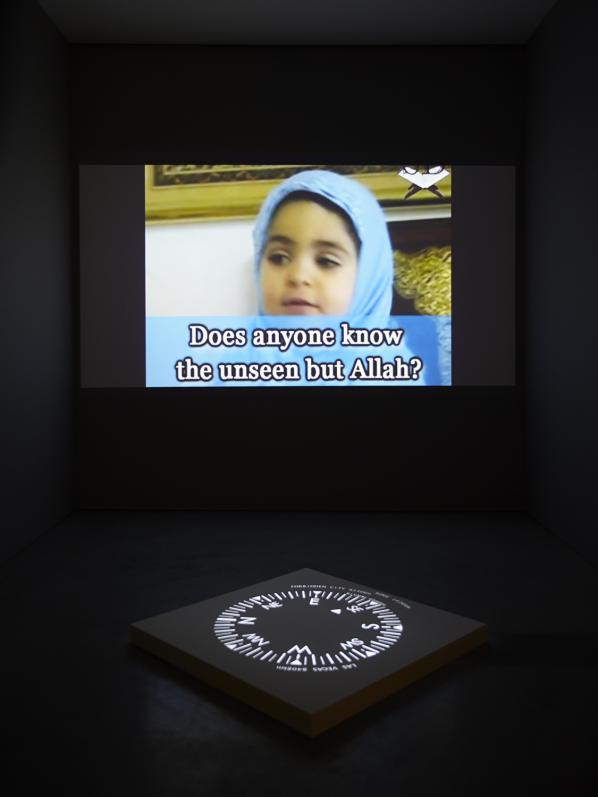
Another work, Belief (2012), depicts the human race as a vast interlinked, self-reflexive system. Its out-stretched nodes ending at webcams pointing to religious mediators, spiritual soliloquists and adamant materialists, all of them searching to define what it means to be in existence. Projected on the floor of the gallery alongside the video a compass points to the location each monologue and interview was filmed, spiralling wildly each time the footage dissolves. Each clip zooms out of a specific house, a town, a city and a continent to a blue Google Earth™ marble haloed by an opaque interface. Far from suggesting a utopian collectivity spawned by the Google machine, Belief once again highlights the mutable structures each of us formalise ourselves through. As David Auerbach suggests, the work intimates the possibility of seeing all human kind at once; a world where all beliefs are represented by the increasingly clever patterns wrought through information technology. Instead, culture, language and information technology are exposed as negligible variables in the human algorithm: the thing we share is that we all believe in something.

Never Odd Or Even features a series of works that play more explicitly with the internet, including London Wall W1W (2013), a regularly updated wall of tweets sent from within a mile of the gallery. This vision of the “quotidian” out of the “global” suffers once you realise that twitter monikers have been replaced with each tweeter’s real name. Far from rooting the ethereal tweets to ‘real’ people and their geographic vicinity the work paradoxically distances Thomson and Craighead from the very thing twitter already has in abundance: personality. In a most appropriate coincidence I found myself confronted with my own tweet, sent some weeks earlier from a nearby library. My moment of procrastination was now a heavily stylised, neutralised interjection into Carroll / Fletcher gallery. Set against a sea of thoughts about the death of Margaret Thatcher, how brilliant cannabis is, or what someone deserved for lunch I felt the opposite of integration in a work. In past instances of London Wall, including one at Furtherfield gallery, tweeters have been contacted directly, allowing them to visit their tweet in its new context. A gesture which as well as bringing to light the personal reality of twitter and tweeters no doubt created a further flux of geotagged internet traffic. Another work, shown in tandem with London Wall W1W, is More Songs of Innocence and of Experience (2012). Here the kitsch backdrop of karaoke is offered as a way to poetically engage with SPAM emails. But rather than invite me in the work felt sculptural, cold and imposing. Blowing carefully on the attached microphone evoked no response.
The perception and technical malleability of time is a central theme of the show. Both, Flipped Clock (2009), a digital wall clock reprogrammed to display alternate configurations of a liquid crystal display, and Trooper (1998), a single channel news report of a violent arrest, looped with increasing rapidity, uproot the viewer from a state of temporal nonchalance. A switch between time and synchronicity, between actual meaning and the human impetus for meaning, plays out in a multi-channel video work Several Interruptions (2009). A series of disparate videos, no doubt gleaned from YouTube, show people holding their breath underwater. Facial expressions blossom from calm to palpable terror as each series of underwater portraits are held in synchrony. As the divers all finally pull up for breath the sequence switches.
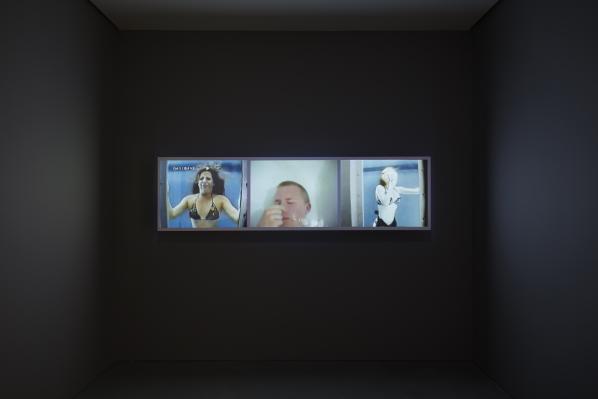
According to David Auerbach, and with echoes from Thomson and Craighead themselves, Never Odd Or Even offers a series of Oulipo inspired experiments, realised with constrained technical, rather than literary, techniques. For my own reading I was drawn to the figure of The Time Traveller, caused so splendidly to judder through time over and over again, whilst never having to repeat the self-same word twice. Mid-way through H.G.Wells’ original novel the protagonist stumbles into a crumbling museum. Sweeping the dust off abandoned relics he ponders his machine’s ability to hasten their decay. It is at this point that the Time Traveller has a revelation. The museum entombs the history of his own future: an ocean of artefacts whose potential to speak died with the civilisation that created them. [2] In Thomson and Craighead’s work the present moment we take for granted becomes malleable in the networks their artworks play with. That moment of arising, that archaeological instant is called into question, because like the Time Traveller, the narratives we tell ourselves are worth nothing if the past and the present arising from it are capable of swapping places. Thomson and Craighead’s work, like the digital present it converses with, begins now, and then again now, and then again now. The arche of our networked society erupting as the simulation of a present that has always already slipped into the past. Of course, as my meditation on The Time Traveller and archaeology suggests, this state of constant renewal is something that art as a form of communication has always been intimately intertwined with. What I was fascinated to read in the works of Never Odd Or Even was a suggestion that the kind of world we are invested in right now is one which, perhaps for the first time, begs us to simulate it anew.
DIWO (Do-It-With-Others): Origin, Art & Social Context, is an update on Furtherfield’s artistic and cultural practice of DIWO. In light of the emergence of DIWO in other fields of creative practices, and its ever growing popularity. We reconnect to the original reasons of why Furtherfield introduced and shared the concept of DIWO to the world in the first place.
We revisit early historical influences from 60s and 70s Mail Art, Fluxus, Situationism, Activism and D.I.Y culture; early adventures/projects with pirate radio, a mass networked email art, and (snail mail) mail art’, street art project by Furtherfield back in 1999; to what DIWO is now today, part of a more extensive, and networked grass roots movement around the world.
It also draws upon links to P2P (peer to peer) culture, the free and open source movement. Each of these cultural activities are seen as equal, peer relations, and re-hacks an intuitive space away from traditional hegemonies and their established hierarchies.
It re-emphasize it’s core motives, as a critique against mainstream media and the traditional art establishment’s control over our art history and contemporary art imaginations. It challenges the non-critical nature of artists’ complicit desire in conforming to celebrity status and fitting into stereotypical behaviours informed by hegemony, and cultural dominance. Furthefield’s intention for DIWO has always been a about individual and collective emancipation, and this story is about what this means now…
Before we jump into Furtherfield’s first DIWO project it’s worth mentioning an earlier historical reference to Bristol city (UK) and pirate radio. I, and a dedicated group of individuals were interested in finding alternative avenues for community and collective expression. We set up various pirate radio stations in Bristol, the longest running was ‘Electro Magnetic Installation (EMI)’ pirate radio station, which ran for over 18 months, broadcasting to greater Bristol every weekend ending in 1991. We changed our location for each broadcast and disseminated disinformation to confuse the authorities. We used a home built 20 Watt stereo FM transmitter and antenna. All submitted material was provided on audio tape for broadcast, the quality or quantity was not edited and everyone interested had their sound art, cut up mixes, music and words heard by many. We had to close down after a while due to surveillance stress. We did re-emerge with other pirate radio broadcasts briefly, under various different names. An even earlier one, which we took over for a while was called ‘savage but tender’ in 1989.
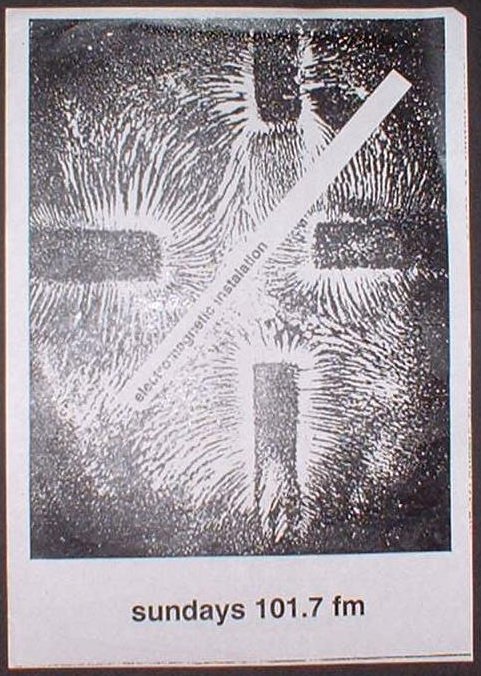
Bristol in the late 80s and early 90s was a dynamic and exciting place to be. Especially if one was creative and also interested in alternative ways of thinking and living. Independent culture was thriving. It was back in the 70s when Bristol’s radical spirit of creative and political autonomy was first forged. Post punk bands such as the Pop Group, Rip Rig & Panic, spread their own influential ethos of being creative and activist as a way of life. Advocating everyday people could be different, be independent thinkers and question the validity of the established norm. This flexible blueprint of being socially conscious in an imaginative way influenced a huge mixture of genres for years to come. Breaking down the borders between the audience and the musicians playing was a legacy handed on down from punk. This includes building your own record label, setting up your own pirate radio station, self publishing and other ventures.
Furtherfield’s first collective (yet unofficial) DIWO experience was at the Watermans Art Centre, London in 1999. We were asked to present a project which reflected the free and liberated spirit of our networked on-line community and its creative culture. The name of the project was called “Pasteups@Watermans Art Centre”, not DIWO. It had all the features of DIWO, such as using email as art, and the traditional postal services (snail mail) as part of its distribtion process. From all over the world people were invited to send images and texts which were then enlarged into a mass of photocopied posters.

On Sunday 10th October 1999 all the hoardings and wall spaces in the streets around the Watermans Art Centre were blitzed with Pasteups. There was no selection of what should be taken out or left in, everything was shown. They were put up by the Furtherfield crew and who ever wished to help out. Some of those whom took part were also local to the area. The people working in the centre reacted as if they were being over taken from a dark external force, and the passing public were expressing a mixture of emotions – enjoyment, surprise, interest, confusion, distaste and annoyance. It challenged the ideal of art having to be a rigid divide and rule of amateur vs professional, using the Internet and the physicalness of the Watermans Art Centre’s building, inside and outside. The streets were used as a shared canvas to fill our collective, imaginative expressions at that time.
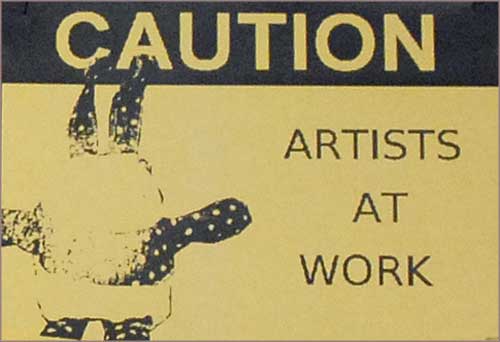
“”… the role of the artist today has to be to push back at existing infrastructures, claim agency and share the tools with others to reclaim, shape and hack these contexts in which culture is created.” [1] (Catlow 2010)
In her study ‘Empire of Dirt: The Aesthetics and Rituals of British Indie Music (Music Culture)’, Dr. Wendy Fonarow [2] investigated the UK’s indie music scene and its culture from the early 1990s to present. Below Fonarow presents the differences between mainstream and independent music culture. Contrasts are mapped out in Lévi-Straussian fashion:
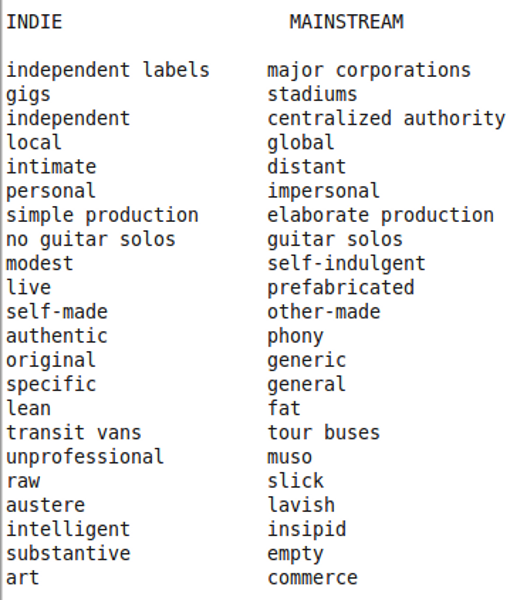
“Indie itself in relation to the mainstream as an opositional force combating the dominant hegemony of modern urban life. Any band that is seen as “chipping away at the facade of of corporate pop homogeny” (Melody Maker, April 1995) is a positive addition to the indie fellowship.”[3] (Fonarow 2006)
There are similar terms above as there is with critical practices in Media Art culture, Free and Open Source culture, activism and hacktivism, and with concepts behind DIWO. Words such as self-made, independent, raw and substantive offer strong relational ties to what we feel ourselves is essential for a thriving, discerning and critically aware process, of an unfettered state of discovering, and how to do things without conforming to top-down protocols, individually or collaboratively.
“To be an artist is to contend with the present, and there are not many other careers that afford the freedom to radically examine life and society. To put it bluntly, if artists are studying and writing more about politics, culture, and education, it’s probably a reflection of the unprecedented dysfunctionality of the societies in which they live.” [4] (Deck 2005)
When considering an art context, critical thinking on the social nuances, social and relational variants introduce possibilities for a deeper understanding of the meaning of a work and its place in the wolrd. Not only in respect of the quality of an artwork in its own right, but it also introduces consideration concerning value. Value comes out of dialogue whilst the work is put into motion, as the process occurs as well as when it reaches its final stage of being seen – it’s birth is always messy, but this process gives us the rich nutriants, the substance.
By recognising resonances that lurk between art and culture and our own connections with these elements; as we make things with others different core values come into play. This is where knowledge of how an artwork and its meaning communicates beyond the artwork itself; to and with others, linking up to the ever changing rhythms dominating society. All this, also depends on the context of how and where a work is seen. An artwork and where it is seen declares the artists’ relationship with other structures, infrastructures and networks, whether this be physical or based on-line. This informs us about the artists’ personal concepts, attitudes and social values. These attributes become part of the work; its story and part of its essence and its reasons for existing in the first place.
Whoever controls our art – controls our connection, relationship and imaginative experience and discourse around it. The frameworks and conditions where art is accessed, seen and discussed is significantly linked to representation and ownership. Socially and culturally, this process of abiding by specific rules and protocols defines who and what is worth consideration and acceptance. For art to be accepted within these ‘traditional’ frameworks a dialogue reflecting its status around a particular type of function kicks into place, it must adhere to certain requirements. Whether it is technological or using traditional art making skills the art itself must in some way conform to specific protocols before it can be allowed into the outer regions of ‘officially’ condoned culture. This process adds merit to the creative venture itself and feeds a systemic demand based around innovation in a competitive marketplace. If an iindividual or an collective does not abide by these dominating rules then they will not be seen in these frameworks. DIWO allows one to venture with many, in playful scenarios of mutual experience and interdependence, freeing up the trappings of ‘officially’ defined protocols and frameworks, governing our behaviours. This does not mean that there are no rules, it merely means that we have a more relationally informed understanding of how to work with others. Structures and aims are decided in different terms mutually.
DIWO is playful re-interpretation and fruition of some of the principles and reasons that Furtherfield was originally founded, back in 96-97. We had experienced as artists in the 80s and well into the 90s, a UK art culture mainly dominated by the marketing strategies of Saatchi and Saatchi. The same company was responsible for the successful promotion of the Conservative Party (and conservative culture) that had led to the election win of the Thatcher government in 1979. We felt that it was time to make a stance against these neoliberalist heavies controlling the art scene and our every day culture. Our aim was to move away from the typically established, sociallly engineered aspects of art culture where false credence was given to a few individuals over many others, based on their personalities alongside their depoliticized artworks.
“Furtherfield’s roots extend back through the resurgence of the national art market in the 1980s, to the angry reactions against Thatcher and Major’s Britain, to the incandescence of France in May 1968, and back again to earlier intercontinental dialogues connecting artists, musicians, writers, and audiences co-creating “intermedial” experiences.” [5] (Da Rimini 2010)
Our move away from this was to create pro-active alternatives, with social hacks, bypassing the marketing myth of the ‘genius’ as a product via the usually distracting diversions, and top-down imposed spectacles based on privilege and hegemony. Recently an article written by John A. Walker on the artdesigncafé web site, disucussed how art culture is still haunted by the power of Charles Saatchi.
“Arguably, as an art collector Charles Saatchi has become a brand in his own right—when he buys art works they and the artists who created them are immediately branded.” [6] (Walker 2010)
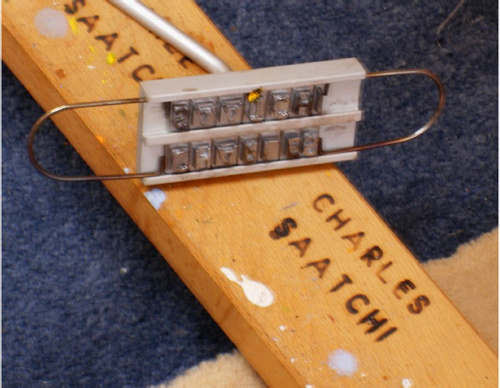
BritArt’s dominance of the late 80s and 90s UK art world dis-empowered the majority of British artists, and Smothered other artistic discourse by fuelling a competitive and divisive attitude for a shrinking public platform for the representation of their own work. Stewart Home proposes that the YBA movement’s evolving presence in art culture fits within the discourse of totalitarian art.
“The cult of the personality is, of course, a central element in all totalitarian art. While both fascism and democracy are variants on the capitalist mode of economic organisation, the former adopts the political orator as its exalted embodiment of the ‘great man,’ while the latter opts for the artist. This distinction is crucial if one is to understand how the yBa is situated within the evolving discourse of totalitarian art.” [7] (Home 1996)
By questioning the myths that dominate our actions we then become more empowered and confident to collaborate with others. We can only rediscover these inner creative kernals by critiquing the infrastructures dominating our behaviours. Many artists have and do conform to mainstream art world rules. This closes down space for a wider dialogue and experience for art practice to expand its possible horizons, beyond a handed down, hermetically sealed set of distant processes. When experimenting with alternative approaches of imaginative engagement a different set of values arrive. Through this we unearth things about ourselves which were already there but were trapped before by the mechanisms and mannerisms of mainstream culture and its dominant values.
DIWO (Do It With Others) is inspired by DIY culture and cultural (or social) hacking. Extending the DIY ethos with a fluid mix of early net art, Fluxus antics, Situationism and tactical media manoeuvres (motivated by curiosity, activism and precision) towards a more collaborative approach. Peers connect, communicate and collaborate, creating controversies, structures and a shared grass roots culture, through both digital online networks and physical environments. Stringly influenced by Mail Art projects of the 60s, 70s and 80s demonstrated by Fluxus artists’ with a common disregard for the distinctions of ‘high’ and ‘low’ art and a disdain for what they saw as the elitist gate-keeping of the ‘high’ art world.
The term DIWO OR D.I.W.O, “Do It With Others” was first used on Furtherfield’s collaborative project ‘Rosalind’ (http://www.furtherfield.org/get-involved/lexicon). An upstart new media art lexicon, born in 2004. DIWO was officially termed here in 2006 (http://www.furtherfield.org/lexicon/diwo)
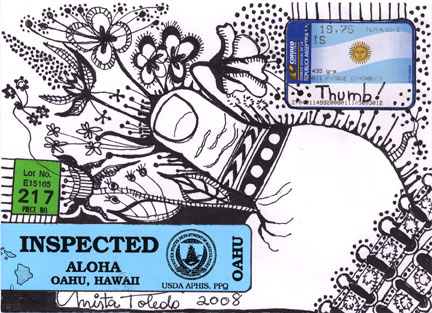
“It is in the use of the postal system, of artists’ stamps and of the rubber stamp that Nouveaux Realisme made the first gestures toward correspondence art and toward mail art.” [8] (Friedman 1995)
Mail Art is a useful way to bypass curatorial restrictions for an imaginative exchange on your own terms. With DIWO projects we’ve used both email and snail mail. Later, we will return to the subject of email art and how it has been used for collective distribution and collaborative art acitivies; but also, how it can act as a remixing tool and an art piece in its own right on-line and in a physical, exhibiting environment.
“[…] many Fluxus works were designed specifically for use in the post and so the true birth of correspondence art can arguably be attributed to Fluxus artists.” [9] (Blah Mail Art Library)
Many consider George Maciunas was to Fluxus, what Guy Debord was to Situationism. Maciunas set up the first Fluxus Festival in Weisbaden in Germany, 1962. In 1963, he wrote the Fluxus Manifesto in 1963 as a fight against traditional and Establishment art movements. In a conversation with Yoko Ono in 1961, they discussed the term and meaning of Fluxus. Showing Ono the word from a large dictionary he pointed to ‘flushing’.
“”Like toilet flushing!”, he said laughing, thinking it was a good name for the movement. “This is the name”, he said. I just shrugged my shoulders in my mind.” [10] (Ono 2008)
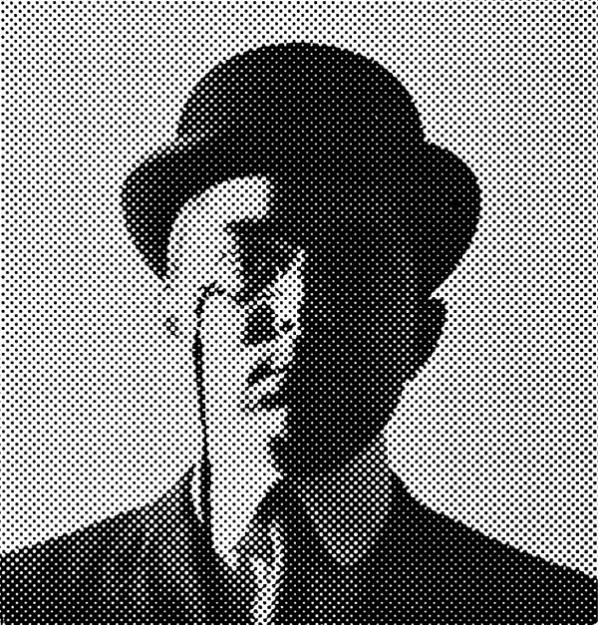
“The purpose of mail art, an activity shared by many artists throughout the world, is to establish an aesthetical communication between artists and common people in every corner of the globe, to divulge their work outside the structures of the art market and outside the traditional venues and institutions: a free communication in which words and signs, texts and colours act like instruments for a direct and immediate interaction.” [11] (Parmesani 1977)
Maciunas’s intentions and ideas are strongly based on creative autonomy. DIWO in the 21st Century explores its own position of (social) grounded reasoning and creative chaos. In contrast to the usual, standardized and bureaucratic implimentations by an increasingly banal, neoliberal elite controlling our art, education, media and economies.
“[…] art has become too narcissistic and self-referential and divorced from social life. I see a new form of participatory art emerging, in which artists engage with communities and their concerns, and explore issues with their added aesthetic concerns” [12] (Bauwens 2010)
“Marshall McLuhan once suggested that ‘art was a distant early warning system that can always tell the old culture what is beginning to happen to it'” [13] (Gere 2002) The infrastructural tendencies that occur when ‘the many’ practice DIWO; informs us we are in a constant process which redefines the role of the individual, and our notions of centralized power and behaviour. This process also presents us with critical questions around the value of art as scarcity. In moving away from our emotional attachment with the socially engineered dependencies based on consumer led forms of scarcity and desire, we then change the defaults. If we change the defaults we change the rules, no longer besieged by top-down defaults and open to more intuitive and relational contexts.
DIWO proposes in its fluid and sensual action of immediacy; situations where anyone can play and initiate collaborative and autonomous art. It is a radical creativity, asking questions through process and peer engagement, loosening infrastructural ties and frameworks as it occurs.
DIWO is a contemporary way of collaborating and exploiting the advantages of living in the Internet age. By drawing on past experiences with pirate radio, historical inspirations from Punk, with its productive move towards independent and grass roots music culture, as well as learning from Fluxus and the Situationists, and peer 2 peer methodologies; we transform our selves into being closer to a more inclusive commons. We transform our relationship with art and with others into a situation of shared legacy and emancipation.

“The network is designed to withstand almost any degree of destruction to individual components without loss of end-to-end communications. Since each computer could be connected to one or more other computers, Baran assumed that any link of the network could fail at any time, and the network therefore had no central control or administration (see the lower scheme).” [14] (Dalakov 2011)
Even though the web and DIWO possess different qualities they are both forms of commons. They both belong to the same digital complexity, and involve us connecting with each other. They are both open systems for human and technological engagement. DIWO rests naturally within these frameworks much like other digital art works or platforms and related behaviours, but possess key differences. If we consider the functions and structures of Facebook, Google, MySpace, itunes and now Delicious, they are all centralized meta-platforms, appropriating as much users as possible to repeatedly return to the same place.
“We see social media further accelerating the McLifestyle, while at the same time presenting itself as a channel to relieve the tension piling up in our comfort prisons.” [15] (Lovink 2012)
These meta-platfroms are closed systems. Not, necessarily closed as in meaning ‘you cannot come in’, but closed to others if you consider their motives and ‘acted out’ values, exploiting human interaction and their uploaded material, and openly ‘given’ data-information. These centralized meta-platforms close choices down through rules of ownership of personal data, as well as introducing more traditional standards of hierarchy, and limits one’s view and potential experience of the Internet.
Richard Barbrook and Andy Cameron saw this curious dichotomy way back in 1995. On one hand we had the dynamic energy of sixties libertarian idealism and then on the other, a powerful hyper-capitalist drive, Barbrook and Cameron termed this contradiction as ‘The Californian Ideology’. “Across the world, the Californian Ideology has been embraced as an optimistic and emancipatory form of technological determinism. Yet, this utopian fantasy of the West Coast depends upon its blindness towards – and dependence on – the social and racial polarisation of the society from which it was born. Despite its radical rhetoric, the Californian Ideology is ultimately pessimistic about real social change.” [16] (Barbrook and Cameron 1995)
Instead of submitting to an imperious process of allowing bland interaction own our behaviours; we propose an engagement where we can be more conscious and in control by exploiting further the real potential of the networks before us.
“We are not going to demand anything. We are not going to ask for anything. We are going to take. We are going to occupy.”[17] (RTS 1997)
Just like Reclaim the Streets which was an anti-car direct action movement seizing roads to prevent cars from being able to access them. Filling up public areas with thousands of bikes and using street parties as part of the political protest. We can loosen the gaze and spectacle of these propriety, meta-platforms and their dominance of our actions with others on the Internet. DIWO, is a way of thinking and acting differently, not an absolutist ‘technologically determined’ factor, but a thing of many things, and leans more towards a kind of social activism going as far back as The Diggers:
“The Diggers [or ‘True Levellers’] were led by William Everard who had served in the New Model Army. As the name implies, the diggers aimed to use the earth to reclaim the freedom that they felt had been lost partly through the Norman Conquest; by seizing the land and owning it ‘in common’ they would challenge what they considered to be the slavery of property. They were opposed to the use of force and believed that they could create a classless society simply through seizing land and holding it in the ‘common good’.” [18] (Fox)
Three elements pull DIWO together as a functioning whole, which can mutute according to a theme, situation or project. These three contemporary forms of (potential) commons mainly include; the ecological – the social – and the networks we use. By appropriating these three ‘possible’ processes of being with others; combined, they introduce and enhance potential for an autonomous and artistic process to thrive, further than the limitations of any single or centralized point of presence. It brings about small societal change, as long as we are conscious of the social nuances needed for a genuine and critically engaged, mutual collaboration.
“Online creation communities could be seen as a sign of reinforcement of the role of civil society and make the space of the public debate more participative. In this regard, the Internet has been seen as a medium capable of fostering new public spheres since it disseminates alternative information and creates alternativ (semi) public spaces for discussion.” [19] (Morell 2009)
In accordance with Mail Art tradition, DIWO began with an open-call to the Netbehaviour email list on 1st February 2007. The exhibition was at our older venue the HTTP Gallery, opening at the beginning of March. Every post to the list until 1st April was considered an artwork – or part of a larger collective artwork for the DIWO project. Participants worked across time zones, geographical and cultural distances with digital images, audio, text, code and software; they worked to create streams of art-data, art-surveillance, instructions and proposals, and in relay to produce threads and mash-ups.
One example of a work which exploited the data-steams of continual flow while over a hundred individuals participated and collaborated in DIWO in 2007, was X-ARN.org (Gregoire Cliquet, Laurent Neyssensas and Yann le Guennec). By using the dynamic exchange of the Netbehaviour email list as reliable exchange of regualr content, the net art group were able to perform their particular and unique processes of interaction, or intervention. It had no specific title, it was literally documenting the list’s networkked behaviour, and there were many of these networked visualizations made. They experimented with the net-specific aspects of DIWO’s mass artistic activity, forming digital mappings of this collected data or data-streams in ‘real-time’, as it all happened.

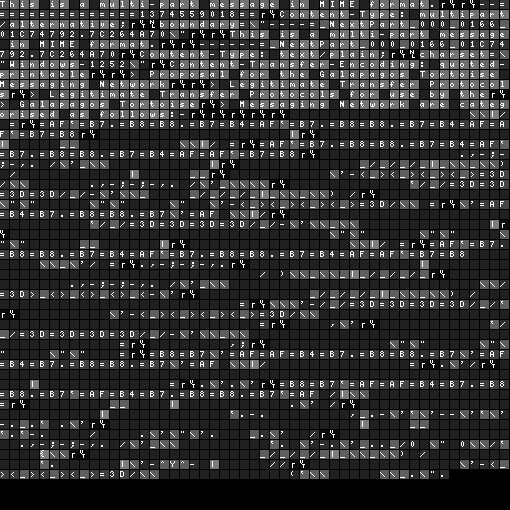
![[ARN / DIWO-Betatests 2007]](http://www.furtherfield.org/wp-content/uploads/2012/05/attachment3.png)
Some also participated in the experimental networked curation of the exhibition, facilitated by web cams, public IRC and VOIP technology. This co-curation event, or Curate With Others (CWO), as it was retroactively named, took place a week before the gallery opening. All subscribers to the NetBehaviour list were invited to contribute to the curation of the exhibition either by viewing the gallery floor plan and posting suggestions to the list or by taking part in the event; attending the gallery or joining the online meeting. Information about how to join the online event was posted to the list. During this event the spirit and philosophy of DIWO E-mail-Art were discussed, the deluge of diverse contributions by about a 100 people were reviewed, plinths, monitors and a drawing machine.
“The ‘Will Work For Food’ happening deals with the desire to find a new definition for labour and the act of working.” [20] (Jeron 2007)
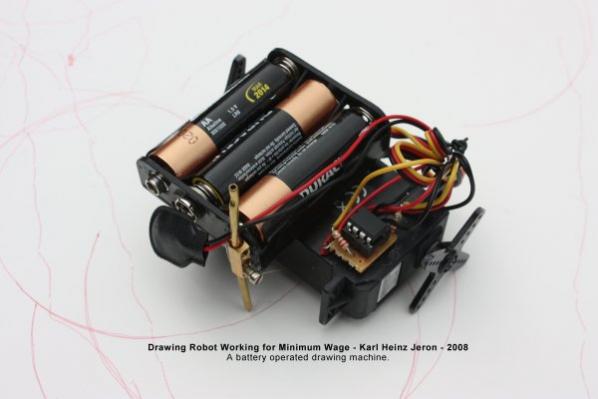
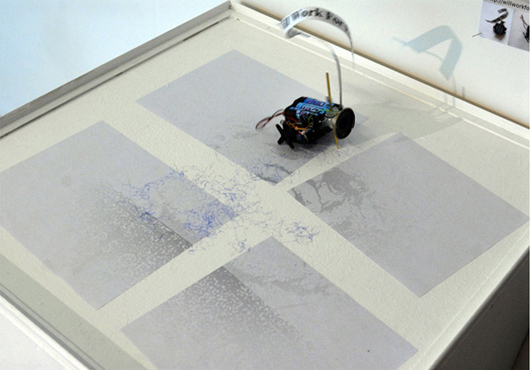
Karl Heinz Jeron’s drawing machine was a vehicle equipped with a ballpen run by rechargable batteries, and when turned on created random drawings. Jeron’s machine was not switched on, unless he received gifts in the post such as chocolates or any other form of economic support. After (thankfully) receiving various contributions in the post the image supplied by Jeron of Karl Marx would gradually be scribbled over.
This section of the Article is an edited version of a collaborative text by Ruth Catlow & Marc Garrett. Originally published on Vague Terrain in 2008. [21]
Present in the flesh were the Furtherfield.org crew and James Morris (regular, esteemed DIWO contributor).
Frederik Lesage manned the Public IRC and, as ‘DIWOchatbod’, who documented the conversation in the gallery for the benefit of those online co-curators who had trouble logging into Skype. Through the afternoon the online event was visited by eight people. The CWO event determined the format of the DIWO exhibition and the Furtherfield.org crew was charged with installing it. So, about approxximately 15 individuals on the day co-curated the setting up of the exhibition. Afterwards we informed everyone on the Netbeahviour list for any last minute details and suggestions and then continued with everything.
(Floorplan of Do It With Others (DIWO) at HTTP-Gallery, London. 2007)
The centerpiece of the exhibition was an e-mailbox containing all submissions; sorted and categorised for visitors to explore and redistribute by clicking ‘Forward Mail’. Streams and Themes displayed images, texts, sounds, code, and movies, primarily by single contributors (human and machine) as well as collections of themed posts or particular kinds of activity). Threads contained series of dialogic emails whose senders were remixing images, movies and code, most often in action and response). Other categories included Proposals and Instructions and Approaches to E-Mail Art.
(DIWO curated emailbox displaying image 3 tampered, posted by Chris Fraser 28/02/07)
Many of the themed folders and subfolders had their corollaries in the physical space of the gallery in the form of wiggly overlapping streams of printed images, pinned to the walls. Threads were represented by scrolls; one post after another in chronological order. A TV ran a video compilation, a sound compilation was played over four speakers, and two installation works were devised especially for the space. Karl Heinz Jeron’s ‘Will Work for Food’ and a print/projection mashup by Thomson and Craighead and Michael Szpakowski.
(Visitor to DIWO E-Mail Art at HTTP Gallery explores the DIWO email box. 2007. Image by Pau Ross)
All categories were liberally interspersed with off-topic discussion, tangents and conversational splurges so one challenge for co-curators was to reveal the currents of meaning, and emerging themes within the torrents of different kinds of data, process and behaviour. Another challenge was find a way to convey the insider’s – that is the sender’s and the recipient’s- experience of the work. These works then were made with a collective recipient in mind; subscribers to the Netbehaviour mailing list. This is a diverse group of people, artists, musicians, poets, thinkers, programmers (ranging from new-comers to old-hands) with varying familiarity with and interest in different aspects of netiquette and the rules of exchange and collaboration. This is reflected in the range of approaches, interactions and content produced. Before DIWO, extensive press releases were posted to different email lists, and online art platforms to join the Netbehaviour list to collaborate on the project.
(Lem Pollocked. By Lem Urtastik 16/2/07 / Created using Jackson Pollock artware by Miletos Manetas)
As with our previous experience of collective media arts ventures such as the first round of NODE.London Season of Media Arts (2006) [21] “we saw that lots of people invested with most enthusiasm in unstructured discourse; meandering and complex. This gave all participants a partial but meaningful view of the diverse contexts in which we worked, allowing us to make decisions about what our contribution could be. These many-to-many deep processes are never efficient but still invaluable to us in a culture where the pressures are always to be newer, faster, better-oiled, less philosophical, less human (ie less messy and complicated), more productive in the service of strategic overview.” (Garrett and Catlow) [ibid]
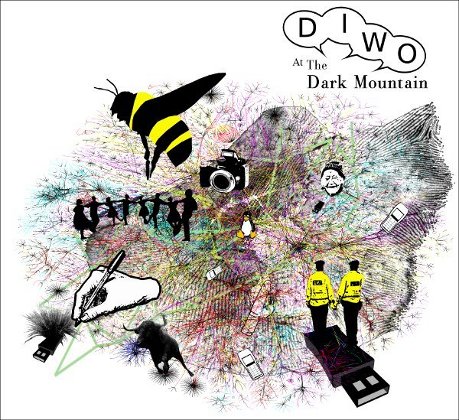
The next DIWO took place in 2009. It was called ‘Do It With Others (DIWO) at the Dark Mountain’. It was a collaboration between the then, newly formed ‘The Dark Mountain Project’, [22] Furtherfield and those participating in DIWO. A Dark Mountain manifesto grew out of a conversation between Paul Kingsnorth and Douglad Hine. It was an invitation to a new cultural response to the converging crises of climate change, resource scarcity and economic instability.
Paul Kingsnorth, in a letter to George Monbiot in the Guardian Newspaper which was also (openly) published by Monbiot said “As for saving the planet – what are we really trying to save, as we scrabble around planting turbines on mountains and shouting at ministers, is not the planet but our attachment to the western material culture, which we cannot imagine living without.” [23] The Dark Mountain Project wrote their Manifesto ‘UNCIVILISATION: the dark mountain manifesto’ “Old gods are rearing their heads, and old answers: revolution, war, ethnic strife. Politics as we have known it totters, like the machine it was built to sustain. In its place could easily arise something more elemental, with a dark heart.” [24] (DMP 2009)
The Dark Mountain Project has been viewed by many as apocalyptic, yet it also has grown in popularity these last few years. When discussing the project Hine says “Rather than treating these as distinct problems in need of technical solutions, we argued that they should be treated as symptoms of a deeper social and cultural crisis, a failure of the stories we have been telling ourselves for generations.” The Dark Mountain Project text was “addressed to other writers, and there is still a vein of Dark Mountain which is about finding new ways of writing, adequate to the times we are living through.” [25] (Hine 2009)
Kingsnorth and Hine both come from a literary background. Asking people to get involved in the project was a big ask.
DIWO E-Mail Art contributors in 2007 included: //indira, [–lo_y-], aabrahams, Alan Sondheim, Alexandra Reill, Allan Revich, Ana Valdes, Andre SC, Andrej Tisma, Ant Scott, arc.xolotl ARN, Aurlea, biodollsmouse, Bjorn Eriksson, Bjorn Magnhildoen, Blackmail, bob catchpole, bobig, brian@netart.org.uy, Camille Baker, Chris Fraser, Christphe Bruno, Clive McCarthy, cont3xt.net, Corrado Morgana, Daniel C. Boyer, dave miller, Denisa Kera, Dion Laurent, Eric Dymond, Edward Picot, Frederick Lesage, Geert Dekkers, Giles Askham, Giselle Beiguelman, Gregorios Pharmakis, Hans Bernhard, Helen Varley Jamieson, Hight, James Morris, janedapain, Jon Thomson, Jonathon Keats, Kanarinka, Kate Southworth, Lance W, Lauren A Wright, lem urtastic, Lewis LaCook, Lisa, Lizzie Hughes, Lorna Collins, Lucille C, Marc Garrett, Marc Cooley, Maria Chatzichristodoulou, mez breeze, Michael Szpakowski, Msdm, Neil Jenkins, patrick lichty, Paul Trevor, Regina Pinto, Riccardo Mantelli, Richard Osborne, rich white, Rosangela Aparecide da conceicao, Ruth Catlow, Sachiko Hayashi, Severn, Sim Gishel, Spread, Susana Mendes Silva, Taylor Nuttall, The Subversive Artist, Turbulence, Wolfgang, xavier cahen, zea.
In February 2012 Furtherfield is opening a public gallery at McKenzie Pavilion in Finsbury Park, providing space for exhibitions, activities and events for art, technology and social change. Before we officially open we would like to invite local community groups and organisations to join us in a friendly networking event which we hope will be the first of many, leading to fruitful partnerships and collaborations.
Inviting Local community groups!
During the event, you will…
– Meet up, be seen, show what you do
– Get to know other organisations and discuss ways we can collaborate
– Inform Furtherfield as to what can happen in the space
We are living through times of great change and uncertainty. Over the next 18 months, Furtherfield hopes to provide a space for imaginative exchange between artists – international and local, of all ages and backgrounds – on epic and everyday themes. Our success depends on the quality of our conversations. We hope that this event will be the first of many that will lead to fruitful partnerships and collaborations. We are inviting local organisations and groups involved in the arts, education, community engagement and support, and all of those working in and running activities in the park.
A full list of confirmed guests will be made available at the event. Please tell us about people or organisations who are important to our area and or who might want to come along and get involved.
Refreshments will be provided.
Please RSVP to Alessandra Scapin, Furtherfield Programme Manager and Coordinator, on ale[at]furtherfield.org to confirm your attendance as the pavilion has limited capacity or on 020 8802 2827 (please leave a message – we are not always in the office)
For more information about getting to the gallery http://www.furtherfield.org/gallery/visit
MADE REAL
an exhibition by Scott Kildall and Nathaniel Stern, the founders of Wikipedia Art.
Networks – social, political, physical and digital – are a defining feature of contemporary life, yet their forms and operations often go unseen and unnoticed. For this exhibition, Scott Kildall and Nathaniel Stern, artists and co-founders of Wikipedia Art, take these networks as their artistic materials and play spaces to create artworks about love, power-play and a new social reality.
Three works are shown for the first time in the UK: Wikipedia Art, a collaborative work “made” of dialogue and social activity; Given Time, an Internet artwork that creates a feedback loop across virtual and actual space; and Playing Duchamp, a one-on-one meeting and game between an absent artist and viewer/participant.
Free admission to exhibitions and events.
Wikipedia Art by Scott Kildall and Nathaniel Stern
‘if you claim something to be true and enough people agree with you, it becomes true.’ Steve Colbert on Wikiality
‘I now pronounce Wikipedia Art … It’s alive! Alive!’ Kildall and Stern
Scott Kildall and Nathaniel Stern famously used Wikipedia as an artistic platform, creating a collaborative project that explores and challenges our understanding of how knowledge is formed and disseminated. For over a year, they planned the initiation of Wikipedia Art, a socially generated artwork that exploits a feedback loop in Wikipedia’s citation mechanism. Here, a “word war” across blogs, interviews and the mainstream press, which involved Wikipedians, artists, journalists, lawyers and even the Wikimedia Foundation itself, continuously defined and transformed a work of art in much the same way that these categories define the discourses of the everyday.
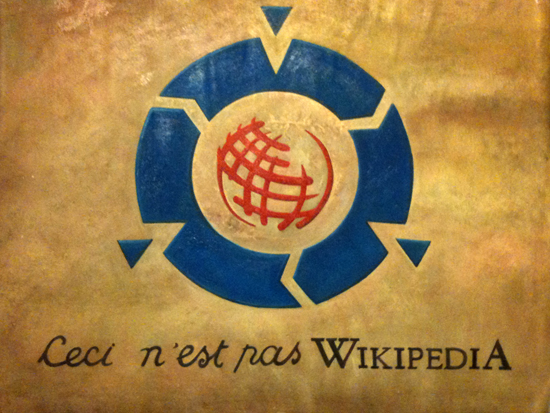
‘We ask our potential collaborators – online communities of bloggers, artists and instigators – to exploit the shortcomings of the Wiki through performance.’ Kildall and Stern
(Often unwitting) collaborators ‘performed’ the work through a debate about its aesthetic, conceptual and legal legitimacy in over 300 texts in over 15 languages on the Internet via blogs and forums such as Rhizome and Slashdot and in the press, including the Wall Street Journal and the Guardian UK.
This exhibition charts the inception, birth, life, death and resurrection of Wikipedia Art, which questions the authoritative role of Wikipedia. It reveals its fallibility whilst debating the control of access to and knowledge creation.
Wikipedia Art featured in the Internet Pavilion of the Venice Biennale 2009. In 2011 it was an awarded finalist at the Transmediale festival in Berlin.
Given Time by Nathaniel Stern
Furtherfield presents Stern’s polar projections of Second Life lovers. Second life is a 3D simulated and virtual world inhabited daily by thousands of people around the globe. To access Second Life, you must embody an avatar (a virtual human representation of yourself), seeing what they see through a computer screen. Stern places his lovers and us in a feedback loop between virtual and actual space.

In Given Time, two life-sized and hand-drawn avatars simultaneously stare longingly across their virtual pond and the real-world gallery floor. They hover in mid-air, almost completely still, supported by the gentle sounds of their breath, the wind blowing, and birds in the far-off distance. The viewer is both the observer and participant of this reciprocal relationship. Through the bodies and eyes of another, we see, look and are seen. Stern says: “Here, an intimate exchange between dual, virtual bodies is transformed into a public meditation on human relationships, bodily mortality, and time’s inevitable flow.”
Given Time was partly supported by the University of Wisconsin – Milwaukee and produced with the help of Jo-Anne Green and Bryan Cera.
Playing Duchamp by Scott Kildall
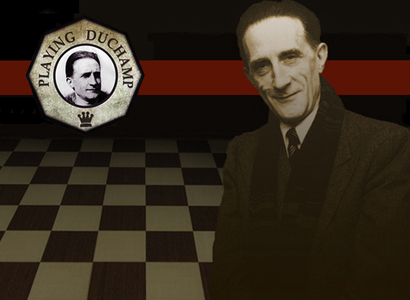
The American artist Scott Kildall, exhibiting for the first time in the UK, has fused the two worlds of art and chess in a homage to Marcel Duchamp, a chess master and artist recognised for shifting the paradigm of conceptual art. Using the recorded matches of Duchamp’s 72 tournament games, Kildall has modified an open-source chess engine to play chess as if it were Marcel Duchamp. By sitting down to this game of computer chess, visitors interact with the ghost of Marcel Duchamp, whose love for chess rivalled his attraction to art. Playing Duchamp is a 2010 New Radio and Performing Arts, Inc. commission for its Turbulence website.
Furtherfield invites you to come and play because, as Duchamp said: “The creative act is not performed by the artists alone”.
Playing Duchamp is a 2010 New Radio and Performing Arts, Inc. commission for its Turbulence website.
Going the distance for fine dining with global friends
In June, Furtherfield will host two telematic dinner parties to accompany this exhibition to create a co-presence dining experience with our remote friends mediated by digital technologies (network connections, projections, laptops and sonified objects). As food is the greatest mediator, we aspire to a satisfying remote connection through the frame of the dining experience.
Contact ale[at]furtherfield[dot]org for details on becoming a dinner guest.
Scott Kildall
Scott Kildall is a cross-disciplinary artist working with video, installation, prints, sculpture and performance. He gathers material from the public realm to perform interventions into various concepts of space.
Scott has a Bachelor of Arts in Political Philosophy from Brown University and a Master of Fine Arts from the School of the Art Institute of Chicago through the Art & Technology Studies Department. He has exhibited his work internationally in galleries and museums and received fellowships, awards and residencies from organisations, including the Kala Art Institute, The Banff Centre for the Arts, Turbulence.org and Eyebeam Art + Technology Center.
Scott is a founding member of Second Front — Second Life’s first performance art group. He is an artist-in-residence at Recology San Francisco. He currently resides in San Francisco.
More information: www.kildall.com
Nathaniel Stern
Nathaniel Stern (USA / South Africa) is an experimental installation and video artist, net.artist, printmaker and writer. He has produced and collaborated on projects ranging from interactive and immersive environments, mixed reality art and multimedia physical theatre performances to digital and traditional printmaking, concrete sculpture and slam poetry.
Nathaniel has held solo exhibitions at the Johannesburg Art Gallery, Johnson Museum of Art, Museum of Wisconsin Art, University of the Witwatersrand, University of Wisconsin-Milwaukee, and several commercial and experimental galleries throughout the US, South Africa and Europe. His work has been shown internationally at festivals, galleries and museums, including the Venice Biennale, Sydney Museum of Contemporary Art, International Symposium for Electronic Art, Transmediale, South African National Gallery, International Print Center New York, Milwaukee Art Museum and more. He is an Assistant Professor in the Department of Art and Design at the University of Wisconsin – Milwaukee.
More information: http://nathanielstern.com
Download Wikipedia Art: Citation as Performative Act (Creative Commons licensed)
by Scott Kildall and Nathaniel Stern, to be included as a chapter in ’ Wikipedia: Critical Point of View. Eds. Geert Lovink and Nathaniel Tkacz. Amsterdam: Institute of Network Cultures (University of Amsterdam), 2011. Forthcoming. Print.
Furtherfield, Unit A2, Arena Design Centre, 71 Ashfield Rd, London N4 1NY, +44 (0) 2088022827
Free admission to exhibitions and events -contact Alessandra Scapin ale[at]furtherfield[dot]org
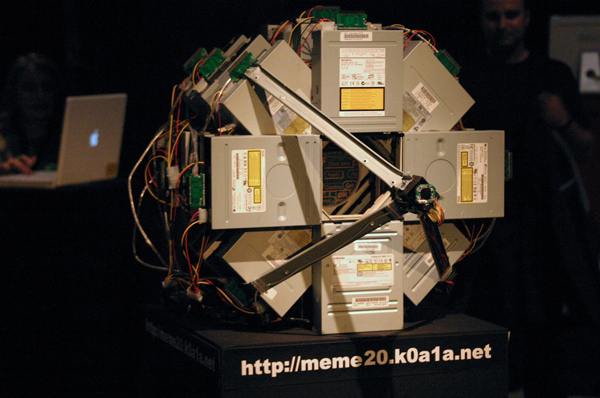
Danja Vasiliev will be working as an Artist in Residence at HTTP, Furtherfield’s Gallery and lab space in March 2010. During this residency Danja will work on his Netless project. Netless is an attempt to create a new network, alternative to the internet. More precisely – networks within existing city infrastructures, possibly interconnected into a larger network alike the internet. Netless is not dependent on specialized data carriers such as cables or regulated radio channels. In fact, there is no permanent connection between all of its hosts (peers) at all – it is net-less.

The network is based on the city transportation grid, where traffic of the vehicles is the data carrier. Borrowing the principals of the ‘sneaker-net’ concept, the information storage devices are physically moved from point A to point B. Numerous nodes of the netless network are attached to city buses and trams. Whenever those vehicles pass by one another a short range wireless communication session is established among the approaching nodes and the data they contain is synchronized. Spreading like a virus, from one node to another, the data is penetrating from the suburbs into the city and backwards, expanding all over the area in the meanwhile. The signal of any of netless nodes can be received and sent to using any wifi enabled device – a laptop, pda or mobile phone.
There are no addresses or routes in the netless network – any participant can potentially receive all data circulating in the network – all data is broadcast. Personal messages and datagrams can be sent using pgp-like personalized keys which ensure that only two people (the original sender and intended receiver) can decipher the message. Only such, as it might seem, oversimplified approach for communication allows the network to be completely homogeneous and flat – any node can be replaced by any other without any modification or configuration. In such an environment it is also impossible to trace data flows.
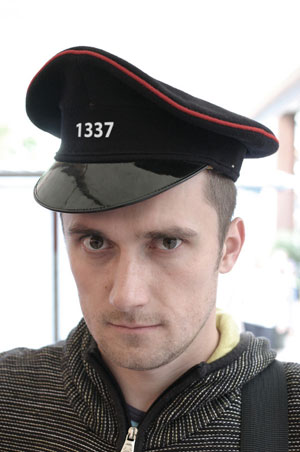
2006-2008: MA in Networked Media (Media Design) at Piet Zwart Institute, Netherlands
2006-2003: BA in ‘Media art’ AKI Academy of Visual Art and Design, Netherlands
2000-2001: Institute ‘ProArte’, short course of new media arts, Saint-Petersburg, Russia
1996-1999: Academy of Culture and Art, Media and Information Design, Saint-Petersburg, Russia
Danja Vasiliev is a co-founder of moddr_lab – http://moddr.net/.
Annie Abrahams will be working as an Artist in Residence at HTTP Gallery in January 2010. During the residency Abrahams will work on the production of three new works including live telematic and online networked performances to be presented as part of If not you not me at HTTP Gallery in February 2010.
Annie Abrahams (b. NL 1954, lives and works FR) is an internationally regarded pioneer of networked performance art. If not you not me at HTTP Gallery in London was the first solo exhibition of her work in the UK. While social networking sites make us think of communication as clean and transparent, Annie Abrahams creates an Internet of feeling – of agitation, collusion, ardour and apprehension.
The residency and exhibition are conceived in connection with Furtherfield’s Rich Networking project interrogating the transparency of communication, artistic collaboration and sociability through digital networks; and as part of Furtherfield’s three-year Media Art Ecologies programme which foregrounds practices sharing an ecological approach – an interest in the interrelation of technological and natural processes: beings and things, individuals and multitudes, matter and patterns.
Working with simple interfaces, disruptions in data-flow and carefully crafted instructions, Abrahams sensitises participants and audiences to glitches in communication and invites them to experience and reflect on different ways of being together in a machine-mediated world. The exhibition asks how we deal with the tensions of collaboration and physical separation as we negotiate relationships through video imagery, computer software and digital networks.
Annie Abrahams was born to a farming family in a rural village in the Netherlands. She obtained a doctorate in biology in 1978 and found that her observations of monkeys inspired curiosity about human interactions. After leaving an academic post, she trained as an artist and moved to France, where she became interested in using computers to construct and document her painting installations. She began experimenting with networked performance and making art for the Internet in the mid 1990s. Her work has since returned to the questions raised by the monkeys, concentrating on the possibilities and limitations of communication on the Internet. She has performed and shown work extensively in France, including at the Pompidou Centre, Paris, and in many international galleries including among others Espai d’Art Contemporani de Castelló, Spain; the Museum of Contemporary Art, Tokyo; and the Armenian Center for Contemporary Experimental Art, Yerevan; festivals such as the Moscow Film Festival and the International Film Festival of Rotterdam, and on online platforms such as Rhizome.org and Turbulence.
RG: A lot of your work utilizes sculptural and spatially interactive elements as well as virtual/networked components. How do you see your work functioning in these different arenas?
RMZ: The majority of the work I do draws from current sociopolitical issues that I feel must be publicized and protested. In so far as creating art that attempts to approach activism, I question the relevance and potential of on-screen virtual/networked art. I believe that in order to create work that embraces activism the work presents greater potential when embodied in the physical space, more importantly the public space to create dialogue between diverse individuals. Of course, I can’t negate the web’s power as a communication and dissemination vehicle, therefore, nearly all the projects that I do have a web component in which information, creative visualization and related links are presented to support the sculptural elements of a given project. Although, today I give greater weight to the embodied space, both arenas, the physical and virtual, present modes of interaction, discussion and contestation that I seek to embrace.
RG: I’ve also noticed that some of your work seems to be a response to specifically curated events, like the Wireless Lab Park Days. Besides the obvious advantages of producing things for venues that already have an audience, what have you found to be pros and cons to this way of working?
RMZ: Although, the Public Broadcast Cart has only been presented at the Wireless Lab Park Days, this is a project that I started working toward before the event was conceived and it is a project that would have been executed regardless of any particular venue albeit perhaps in a different format.
I live in a neighborhood in Brooklyn with a growing Mexican population. Most of these people have arrived here illegally and are eager to work, but many have had to create their own means of sustenance. Amongst the economic means that they have established are mobile flower stores, by taking shopping carts and outfitting them with beautiful arrays of roses. I was struck by the carts themselves as well as how these floral carts establish a strong public presence for the individuals as they push the carts along the sidewalks and streets.
The flower vendors and their carts inspired me to begin building tiny FM transmitters that would be installed within paper crafted flowers that would populate a shopping cart and transform the cart into a radio transmitting tool. The flowers would then be freely given to anyone seeking to inhabit the radio waves. Due to so much radio activity in the area, I had a rough time catching the mini transmitters on the airwaves, so I began to rethink the project. At this time, the Wireless Lab Park Days began to take form. The event helped me to arrive at the final format of the radio cart. I tossed out the miniFM transmitting flowers for a combination of broadcasting via speakers, online radio and a larger 5 watt transmitter and designing the speakers in a way that would visually evoke the flower vendors. So the pros of the event was that it helped me realize the project in an effective manner, that successfully invited interaction, even by people unaware of the wireless event. In general, I would say that realizing a project for a given event may prescribe certain elements to the project and may make the project valuable only to that event. However as wireless nodes continue to spring up, not just here in the states, but throughout Europe and parts of Asia, I do seek to present the project again and continue that old Marxist ideal of freeing the media.
Featured image: August Highland collaborates with William Shakespeare with the start of an going series of sonnets.
AUGUST HIGHLAND/WILLIAM SHAKESPEARE
By now most net artists, curators, net art viewers & related academics are aware of the perpetual antics of August Highland and his networked literary identities. They would also be aware of the non-stop emails that are poured into various lists, like liquidized data streams. Highland’s textural multi-presences bewilder some and subject others in peer positions to envy such fluid dedication.
It’s as though August is a machine, a ghost on automatic drive, asserting an existential punk spirit whilst going through the motions of spewing out into the void the essence of language as a pure medium, exploiting the Internet as a conduit, a space that needs filling. A quantum-digital type of universality or inclusiveness occurs, suggesting that our minds are part of a greater sum. We easily connect to the Internet now and do quite comfortably become part of the matrix.
Broadcast me, scrambled clean
Or free me from this flesh
Let the armchair cannibals take their fill
In every cell across wilderness
We’ll trip such a strangled tango
We’ll waltz a wonderland affair
Let’s run to meet the tide tomorrow
Leave all emotion dying there
In the star cold beyond all of your dreams
(I want to be a machine, Ultravox 1977)
We are psychologically and emotionally entwined, wrapped in a never-ending abyss of The Body Electric. For the virtual electronic waves, networks that August is currently filling are not far from the patterns of our own physical brains. As time goes by, we might begin injecting his work into our craniums, stimulating our neurons much like smart drugs or medication, as we become a multitude of consciousnesses connected via digital intersections.
One of August’s more recent explorative and playful manoeuvres is a sideways step from his usual all-out Internet infiltrations. This time he collaborates with William Shakespeare. Sonnets by the Superheroes of Humanities is a net-based, single-page object featuring the voice of the late Sir John Gielgud, which is the beginning of an ongoing project to do all of Shakespeare’s sonnets.
When entering the page, you are faced with a presentation of cut-up texts in five sections from the sonnet. In the centre lies the original text, unfettered by the artist for viewers to see before it is garbled. The rest of the four sections are various differentiations, digressing into visual text data. Java scripted words cut up, each possessing its own mannerism, function and movement. One section retypes, another shakes. Also, one can interact by mixing poems or words into sections or palettes.
It is worth venturing to see some of the other identities of August Highland to understand where he is coming from:
“Highland’s work here may on one level be a parody of the entire concept of the “art movement;” inasmuch as the postmodern has been characterized as “the end of movements” and an art era beyond manifestos; Highland, in a bold conceptual move, has birthed an art movement, complete with varied practitioners, from just himself.” -Lewis Look. Multiplicity: Notes for/on August Highland. October 15, 2002. Suite101.com.
Featured image: PANSE (Public Access Network Sound Engine) – an open platform for developing audio-visual net art.
PANSE is the latest in a series of generative audio-visual pieces created by Reykjavik-based artist Pall Thayer. PANSE or ‘Public Access Network Sound Engine’ is a server based program which creates a live audio stream based on (multi) user interaction. Alongside the continuous live mp3 stream, visitors can interact with the piece, modifying and mutating the audio created in real-time through a series of interfaces that also respond visually to the live audio data generated by PANSE and other concurrent visitors.
The project is an open platform for the development of audio-visual net art, with an invitation to anyone who wishes to create an interface to the engine. Further information on this is included in the site with examples and a gallery of interfaces created by Pall and contributions from french artist Joachim Lapotre.